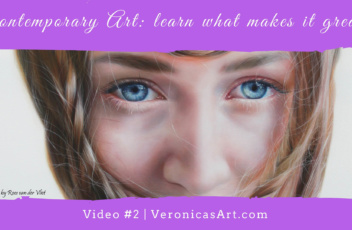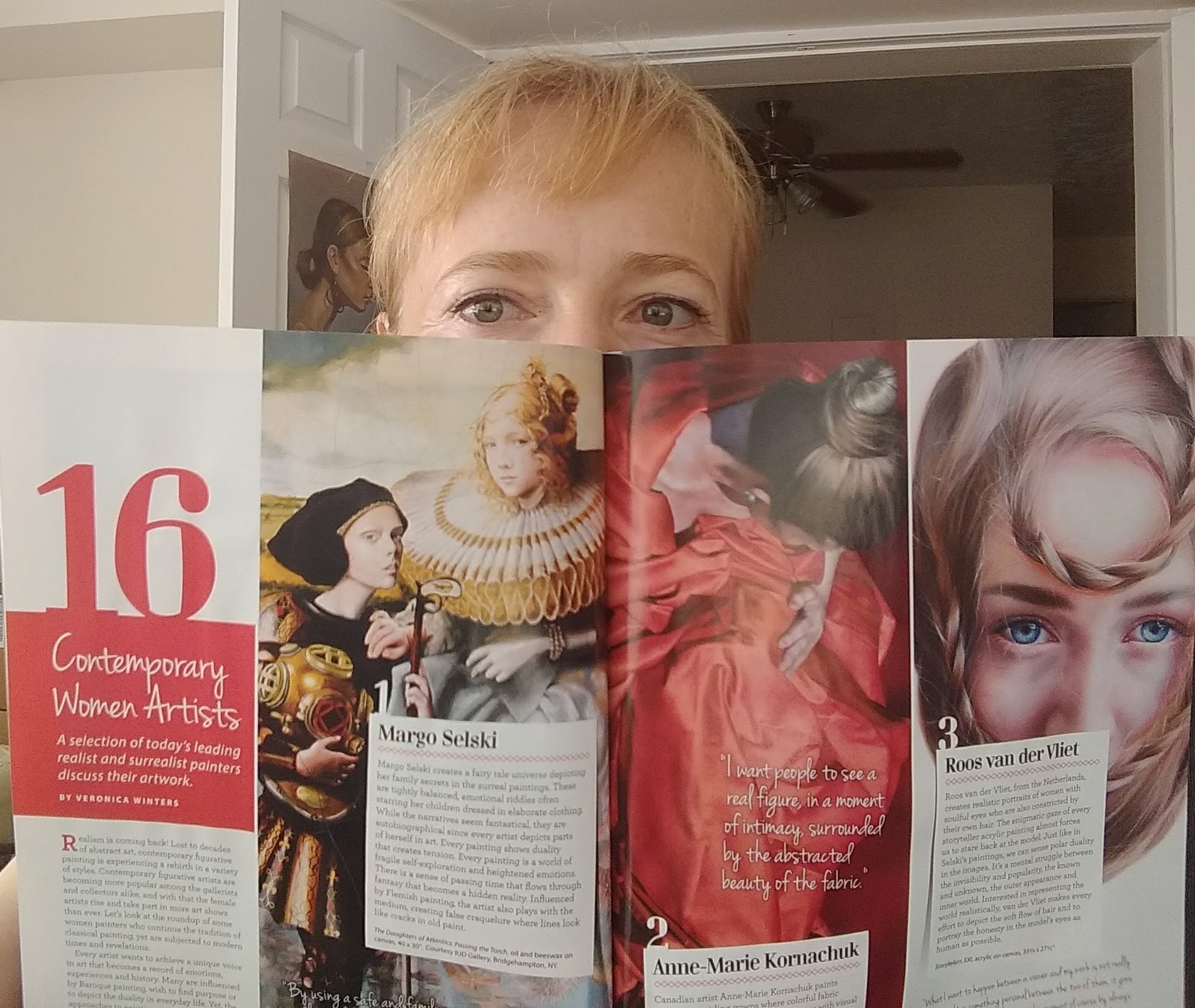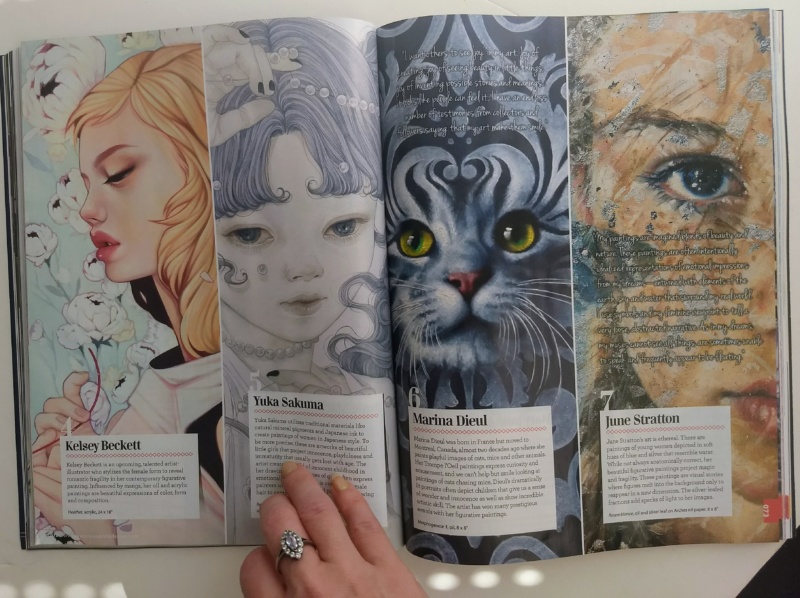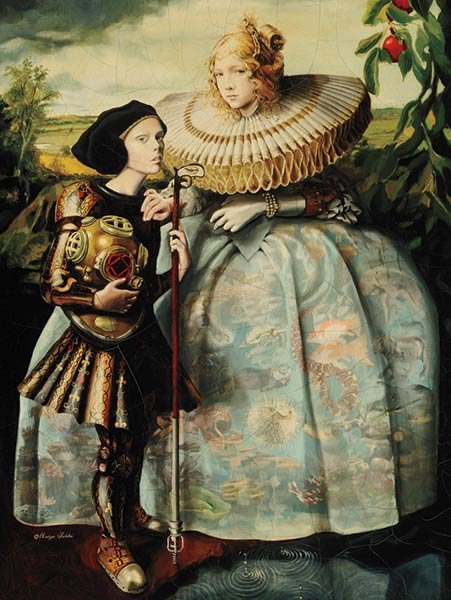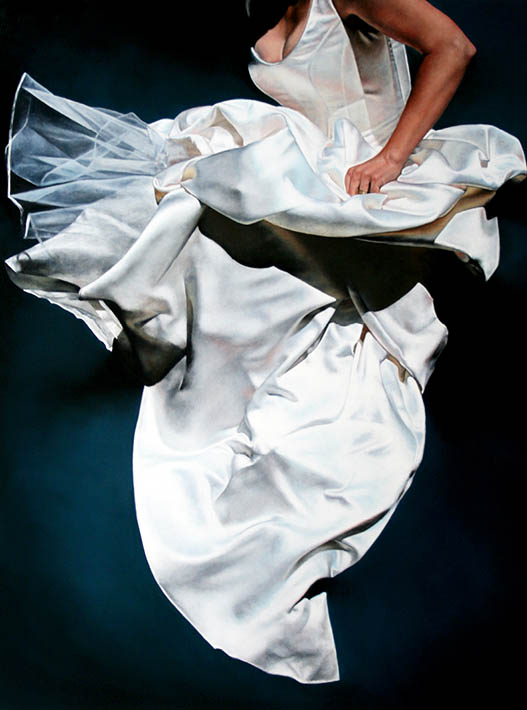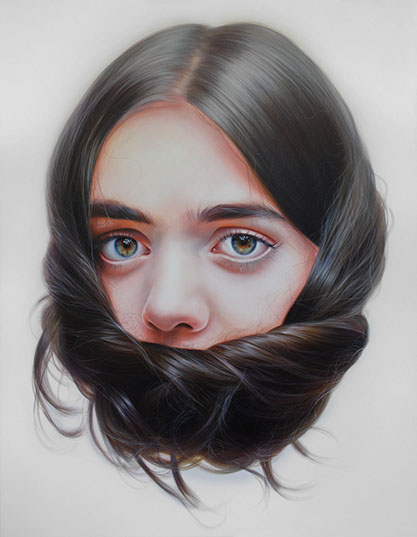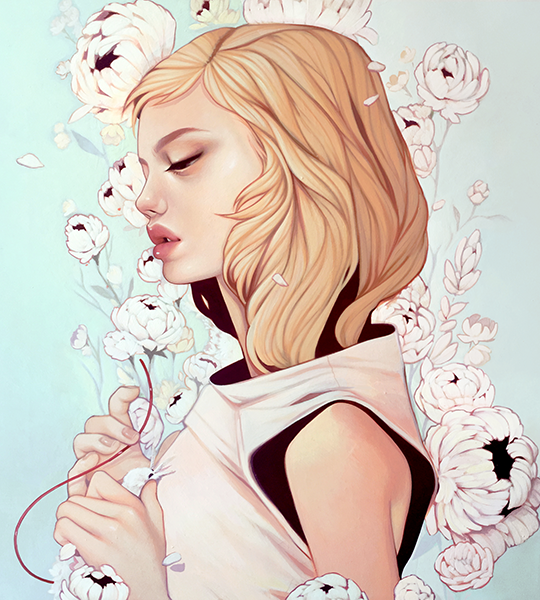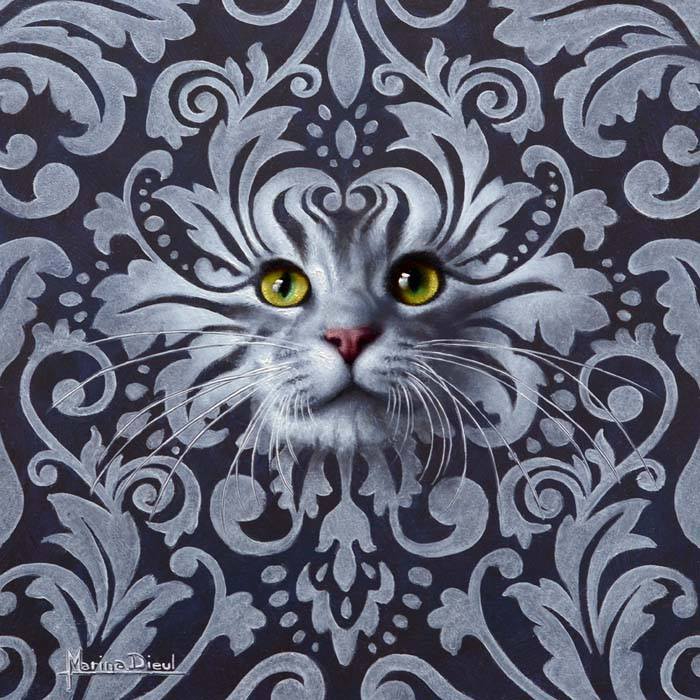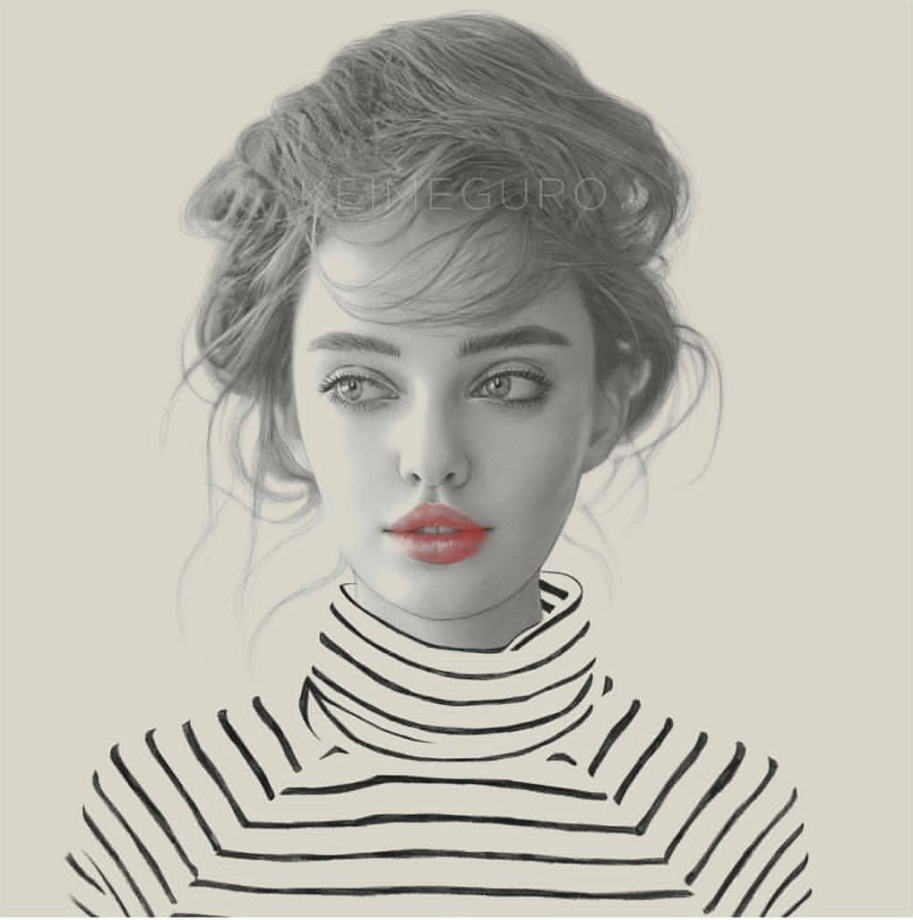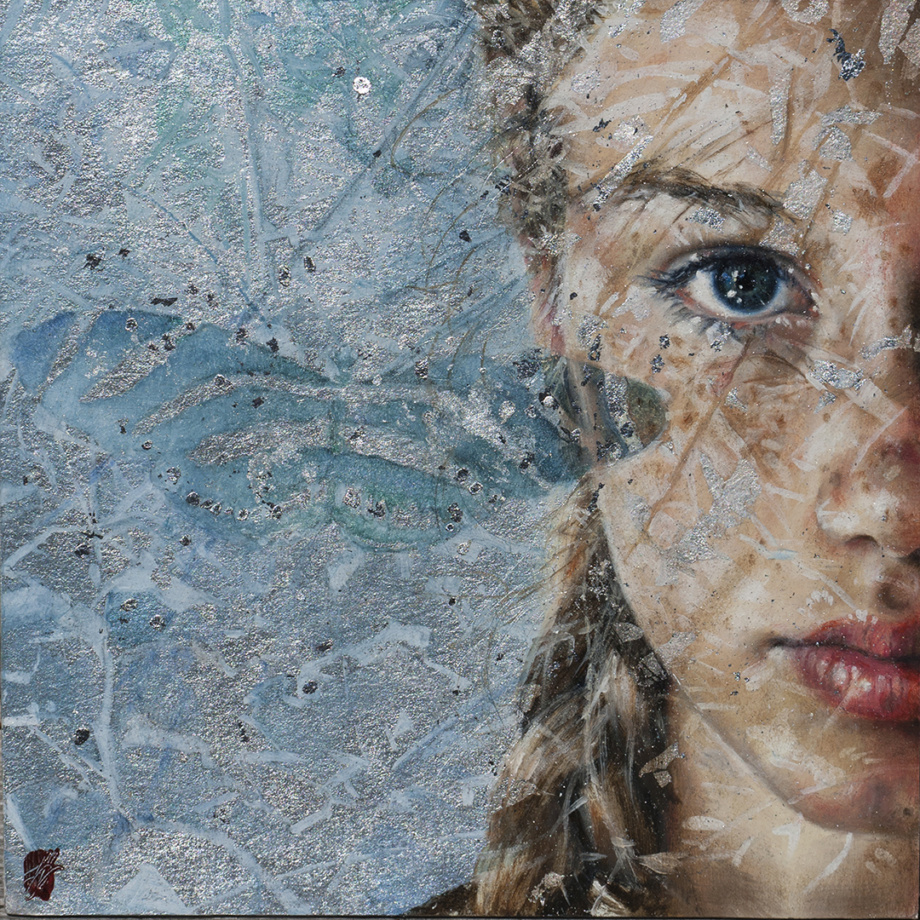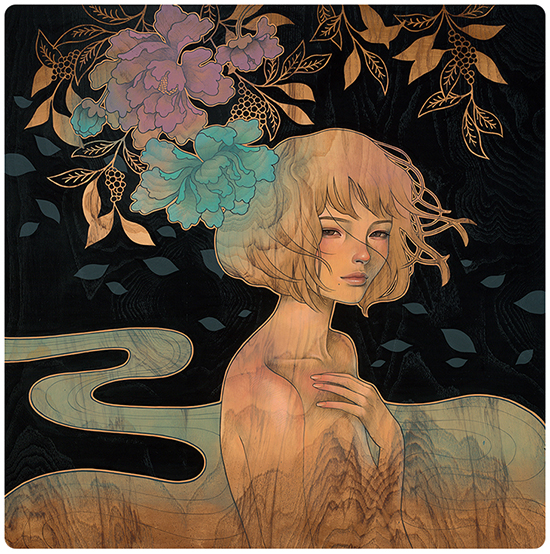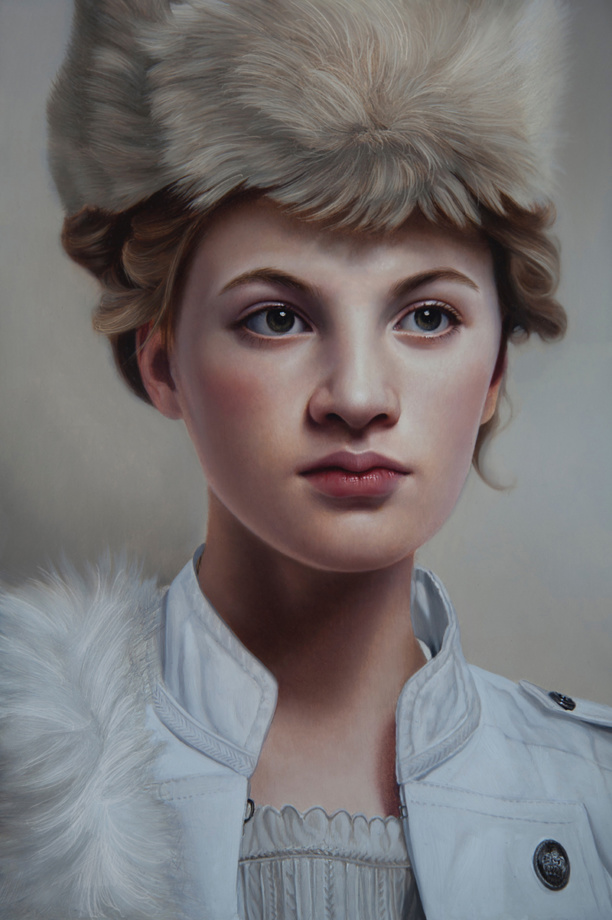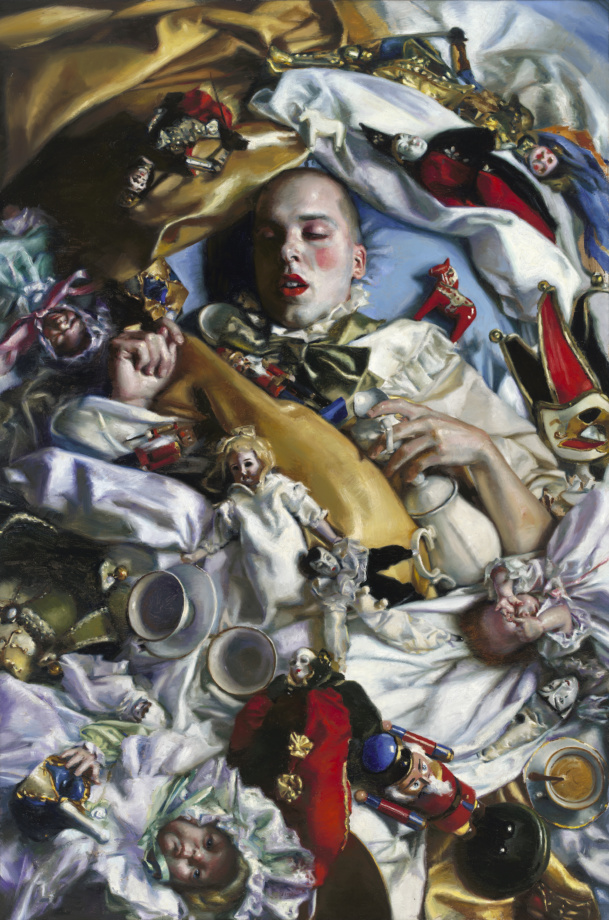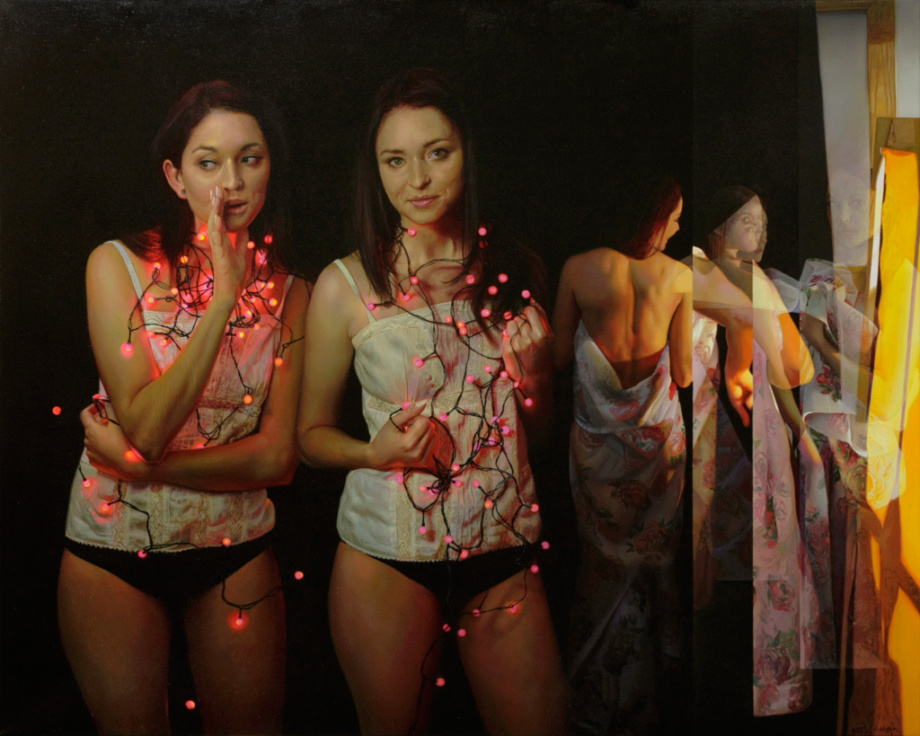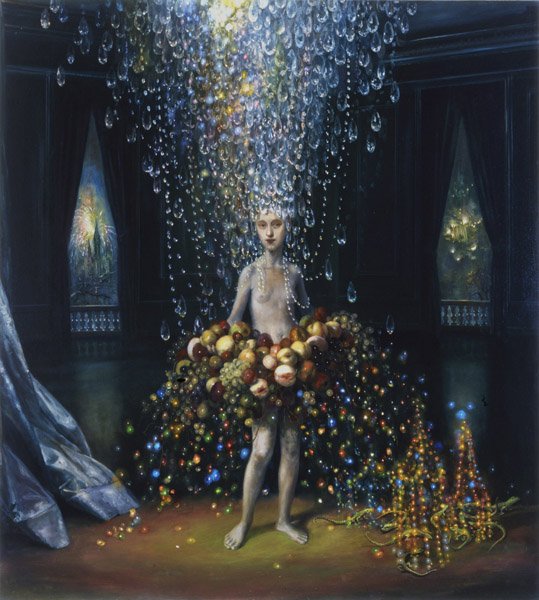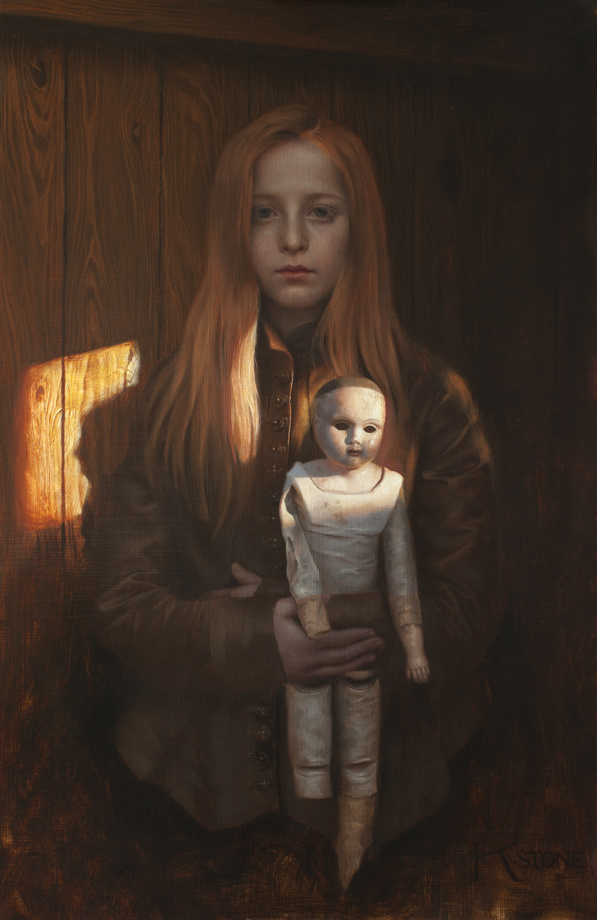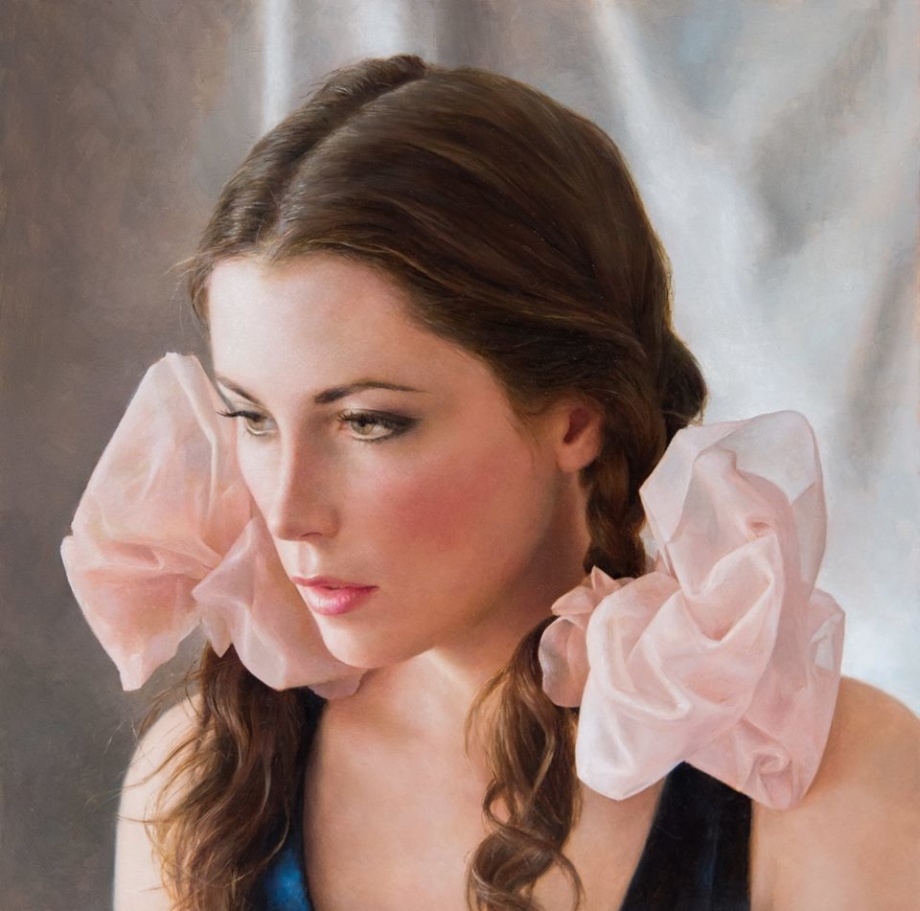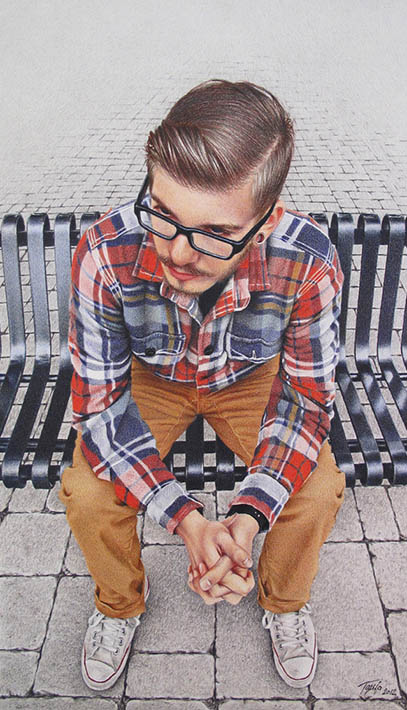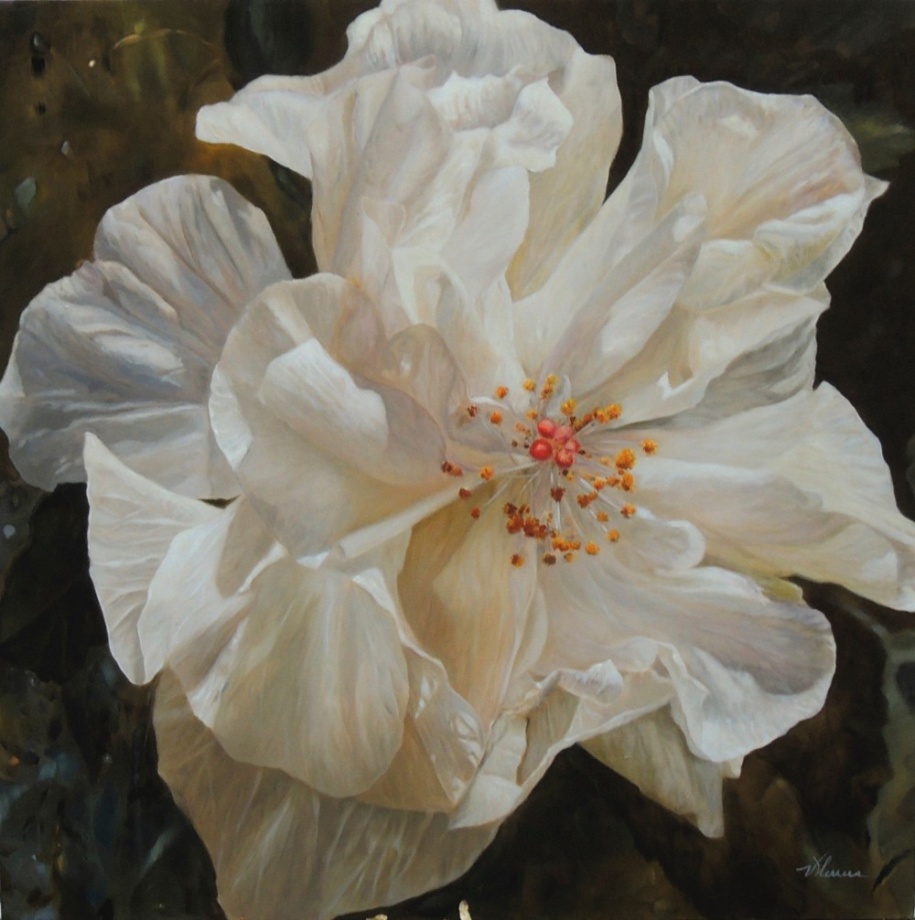In the first video you got introduced to classical painting created before the 20th century. In this article let’s talk about some contemporary art to figure out why some “childish” paintings cost millions while relatively good art remains undervalued. Before I say anything about it, I’d like to note that I’m not an art critic, and I’m here not to judge artists, rather I’d like to explain what’s great about contemporary painting, so you’d consider my understanding of art to make your own decisions. I also encourage you to reach out to mentioned artists directly via their websites or Instagram. This video and writing are created as part of my mission to educate and inspire others to value art.
Video #2
Art & art marketing are two opposing forces
When everything is entertainment and the entertainment is everything, provoking the public to engage with contemporary art becomes a necessity. Artists compete with the media and each other and often try to engage with the audience, either shocking you with their art, or innovating the process somehow that generates publicity, sparks a conversation, and engages you. Performance art, installation art, shinny sculpture or moving video image attract us a lot more than a silent wall painting. Contemporary art museums try to catch up with the social media and modern times, making installations that encourage interaction, taking of selfies and other social media activities. Contemporary art paintings often don’t make any sense unless they are explained. As viewers we are often forced not to rely on our senses judging the painting’s visuals that’s inherited from concept painting or abstract expressionism. We have to search for meaning in shown art in artist statements or curatorial writing.
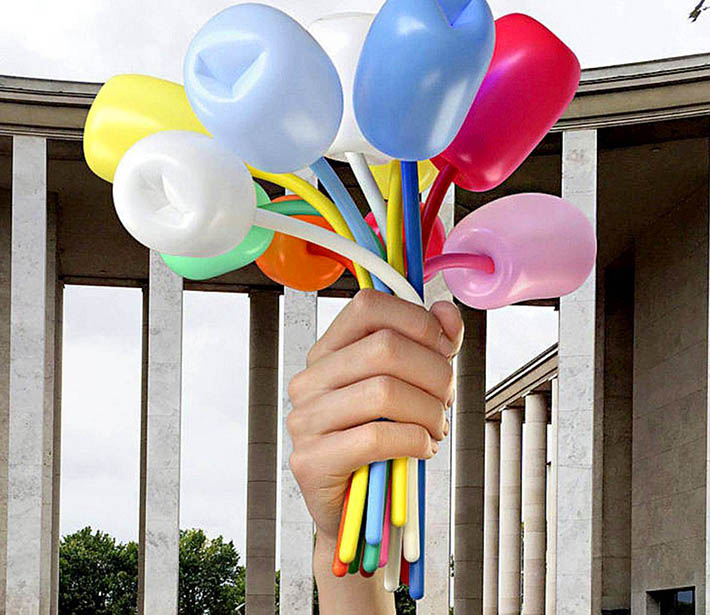
Quality of art hardly matters these days, and many artists are sold based on their publicity stunts and marketing efforts. Therefore popularity and name recognition that we call ‘branding’ becomes vital to the artist’s career. (We can look at great art marketers – Jeff Koons, Marina Abramovic, or Damien Hirst).
While performance art can be powerful caring a message, it largely relies on a shock value to deliver that message. By following this link, you can see how low we as people can go, to take advantage of others. https://www.elitereaders.com/performance-artist-marina-abramovic-social-experiment/ Over the years I saw several installations by Abramovic, and they varied significantly in their message, shock value and impact.
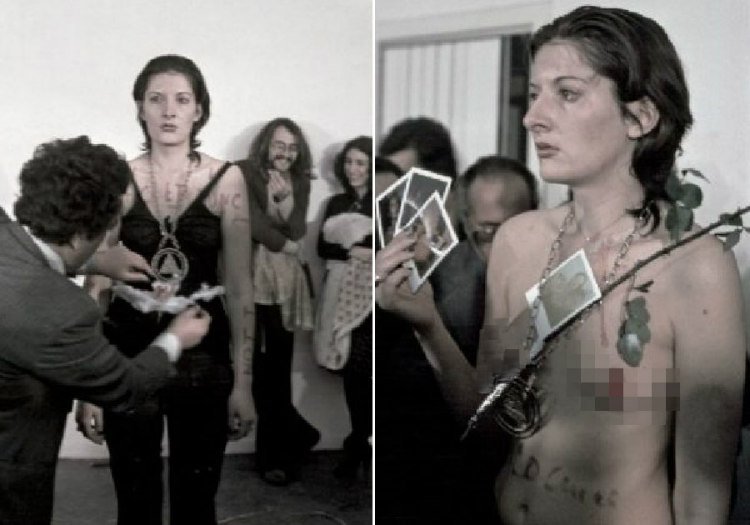
Not all artists travel this road and focus on cultivating their clientele based on their artistic vision and skill. If art is not political or socially charged, it’s much harder for an artist to get noticed based on vision, and this is the cornerstone for a lot of creatives out there. Does the artist change his mindset to work for the market attracting attention in new ways, or stays true to himself, creating art for the art’s sake?
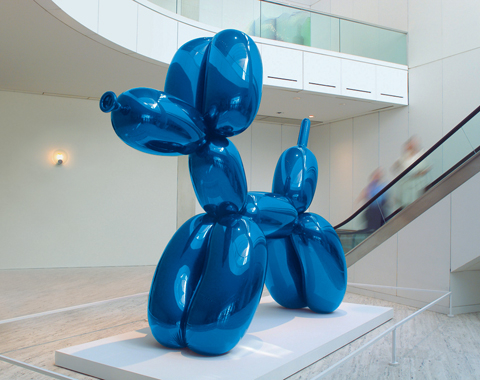
Art buying tiers and social behavior
Art buying has its own tier system. The lowest tier – is the tier of consumerism. Because we see artistic creations all around us, it desensitizes us and makes good art look unattractive, cheap and unnecessary purchase. We don’t buy originals, rather get posters and merchandise that makes practical sense because we either can’t afford the original of the contemporary artists we like, or we don’t want to make a commitment buying original art. Regardless the intent, most people buy prints. However, there is not much value in giclee prints in the long run. However, print sales support the aspiring artist, giving him/her a chance to develop artistically and not give up doing art. Limited edition signed prints hold more value for the collectors as well as allow artists to cover some of their studio costs.
Some prints doe have value. These are hand-pooled lithographs, silkscreens and other prints made based on traditional methods in printmaking. Printmaking is the original art form where you can get a few multiples or additions.
The middle tier – is where the market agrees to pay the artist anywhere between $100 and 1K for original art. The upper middle tier is where most artists want to sell their art because it covers the cost of living. These art collectors who buy original art at this price point love art and have the means to appreciate and support the artist.
In the top tier purchases we see hedge fund managers and the ultra rich, who are mostly driven by financial investment rather than art appreciation. Today we see famous contemporary art selling at epic prices. Money becomes the absolute that determines the value of the artist and his work at the Sotheby’s and other art auction houses.
(A Jean-Michel Basquiat painting rocketed to $110.5 million. The previous record was $105.4 million paid for Andy Warhol’s “Silver Car Crash, Double Disaster” four years ago. Pablo Picasso, Garcon a la pipe, 1881-1973 went for 104.168 million, Edvard Munch, the Scream, 1895 sold for $119.922 million). Obviously, these are the sales where art is bought and sold as an investment only. Most buyers are Wall street hedge fund managers, Russian oligarchs, oil magnates and other billionaires that push the art prices up. To understand this motivation isn’t hard. To see why visually terrible art sells, you can watch a documentary on Netflix titled Blurred Lines: inside the art world. Exit through the Gift Shop that shows you how an unknown street artist made his first million by taking risks and employing smart marketing tactics.
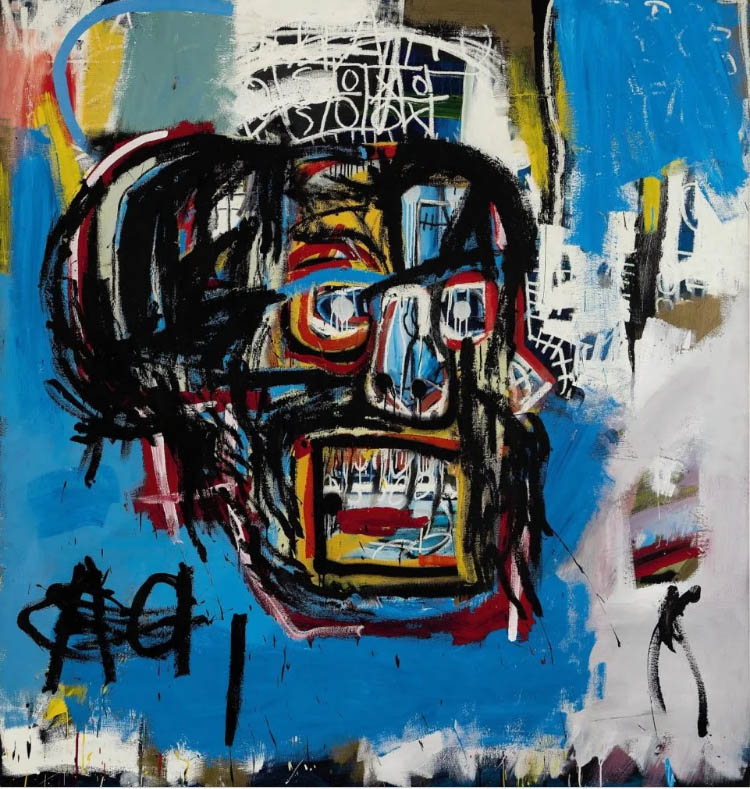
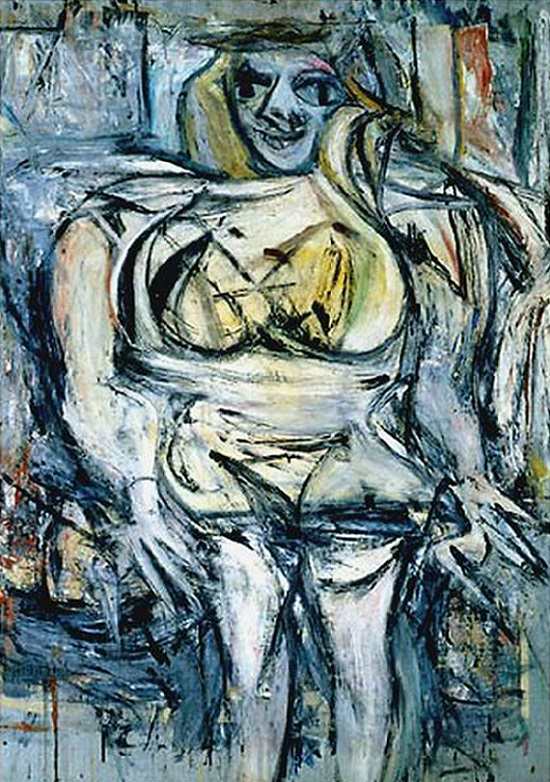
So how do we decide what’s good or bad art? I’d like to encourage you to make your own judgement as opposed to relying on experts and art critics, if you’re not buying art for investment purposes only. You either love it or not. You decide what’s meaningful to you, what moves and engages you on a much deeper level that’s not associated with publicity stunts, big name investment or marketing gimmicks.
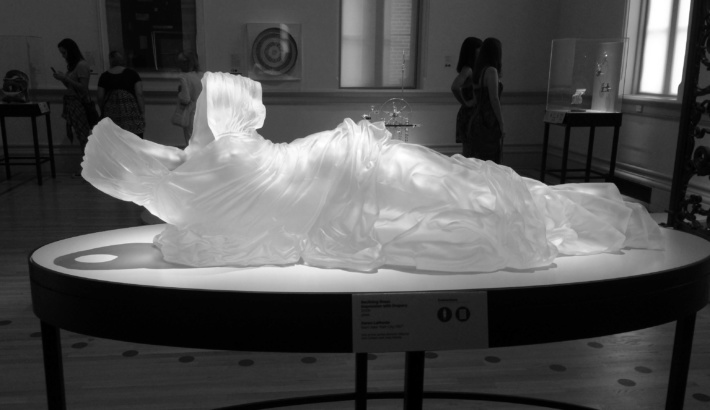
Art is a business
Capitalism is unforgiving. This system of art sales leads to art market manipulation and the sales of art that’s not art but is represented as such to the wealthy by powerful dealers and curators. This is one of the reasons why we see ugly paintings at contemporary art fairs and art museums today. Art is a business and a collusion of sorts.
Art galleries, curators and dealers have their own tiers. Many of them are vanity galleries that charge artists thousands of dollars for representation and those artists who can afford it become part of the fairs. Their art is not great or even good to be called art, but because they have a way of paying for their space, they receive representation from small curators and dealers who offset their costs, making a living this way.
Financially strong and established galleries take on new artists who have consistent art production and sales as well as develop good relationship with the gallery owners. Competition among artists for getting into a really good gallery that takes care of the artist’s sales and pays 50% of the retail price is fierce. Competition for a spot under the sun encourages jealousy and rivalry among many contemporary artists I know, but not all. Many artists remain humble and sweet to their kind and tend to help out when asked properly.
Art is a tough business for many small and medium size art galleries because of high overhead costs that often eat most of the profit. Many small galleries close, move or go out of business as people shop for art online more. And just like the retailers, they experience a loss of clientele. This trend gives independent artists an opportunity to sell their art directly to clients bypassing the middleman. Therefore, learning the art of business and online marketing for the artist is just as important as making art.
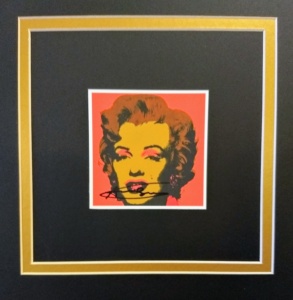
Art education today
There is purposeful deskilling of art in college education. As a result of deconstructivism, abstract expressionism and concept art movements, artists have been forced to create art out of limitation, writing confusing artist statements about their work. The devaluing of representational art led to numerous colleges and universities to keep professors raised on concept art. Therefore college art education is limited to knowledge of its instructors. It’s often enough to look at their art to understand what you’ll be learning in class. If your aim is to study classical painting techniques in such universities, you’ll see lots of resistance and little instruction in this area as the main goal of college art education in studio painting is to work on your concept in art as opposed to growing your skill, vision, and business mindset. A student who decides to learn classical oil painting techniques often faces confusing opinions that don’t lead to constructive criticism because there is no standard left in art to aspire to. There are no rules or apprenticeships available to follow the footsteps of the established master painter as it used to be for centuries before the modernism. If a student aims to study realism, he is often a loner who receives no business or artistic tools necessary to make it in the art world after graduation. While we can see a rise in the classical training ateliers today, the art world is still largely dominated by abstract and conceptual art that you find in the educational system at college level.
As an antidote to this established system we see a revival and surge of realism in painting and education now. Atelier schools, artists’ studios and some universities have been popping up all around the country in the past decade. Such spaces include the Grand Central Academy of Art in New York, Anthony Ryder’s school in Santa Fe (www.theryderstudio.com ), and Nelson Shanks’ school Studio Incamminati in Philadelphia. (www.studioincamminati.org), etc. Many realist artists teach their oil painting techniques both online and in studio.
I must say that not every abstract is bad, just like not every conceptual piece is boring, or realist painting is great. My point is that artists should have a choice in their college education as opposed to ‘fitting in’ in the environment that doesn’t allow for personal growth in the direction the artist aspires to go to.
Because art conforms to no previously established rules and standards in art education we find it very hard to determine and value art today. To read any modern or contemporary artwork we have to look at artist’s mission, background and upbringing besides the visual element itself, which we call ART. Branding is often more important than art.
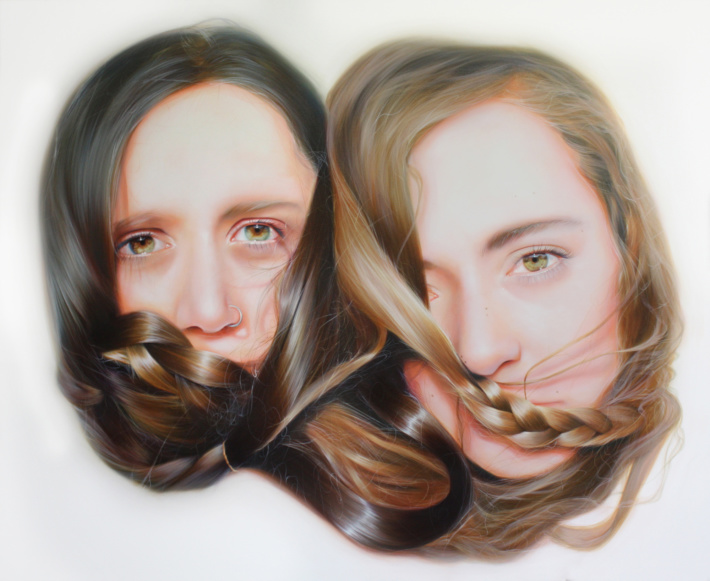
This contemporary portrait painting by Roos van der Vliet from the Netherlands is a wonderful example of great personal vision coupled with amazing acrylic painting technique. By looking at her paintings of women we ask questions about identity and alienation that we often feel being in a crowd of people, yet standing alone.
Major art patrons a century ago:
- The Frick collection
- Andrew W. Mellon collection
- The Phillips collection in the U.S.
- The Tretykov gallery collection in Moscow, Russia and so on.
Art players and influencers today:
- Charles Saatchi & Larry Gagosian as well as other top art dealers
- contemporary art museum top curators
- Art investment firms and houses such as Sotheby’s.
- Loot at MEI/Moses Fine Art Index explains the appreciation of art as a financial investment.
In this article you can read about art influencers:
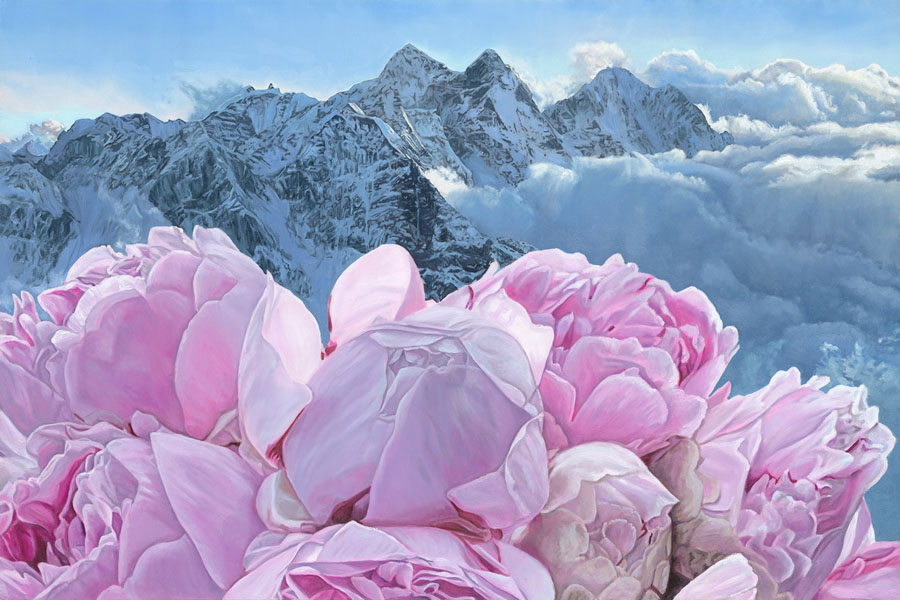
5 Artistic Elements that make great art
Here I’d like to talk about 5 major artistic elements that contribute to creation of great art. A lot of people consider art being great based on just two factors – the realistically painted tiny details and the overall brightness of a picture (paint). I’d like to shatter this myth by explaining that both of these factors are not sufficient to make quality art. It’s very easy to create paintings with bright pigments coming out of the tube. What’s much harder to achieve is color mixing of muted colors that create harmony. The same goes for details. Details are just details, if a painting doesn’t have a story behind it, or composition is weak, or it simply looks too decorative, it’s not great art.
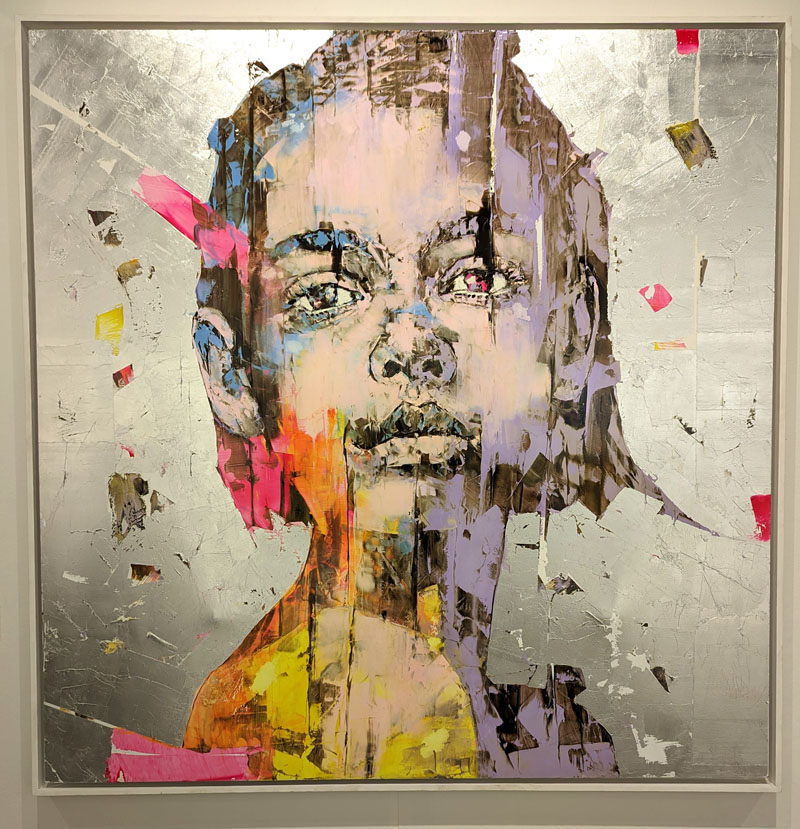
Looking at contemporary art we can either get carried away by the artist’s technical mastery or by the unprecedented innovation. It doesn’t mean that traditionally executed painting is not innovative, innovation is always there in a new way of seeing things. Most importantly, we find something in a painting that resonates deep within us and enhances our lives whether it’s abstract or realist art.
The most important artistic elements that contribute to creation of great painting and 3-D art are personal vision, emotion, innovation, use of color and design as well as the technical ability to communicate the feeling.
A great example of contemporary art painting that combines vision, innovation and great skill is the art of Cesar Santos |https://www.santocesar.com/ | YouTube Santos is a contemporary Cuban-American artist who has painted a series of paintings titled Syncretism. This famous contemporary artist combines various, often opposing artistic tendencies in a pleasing balance. Cesar Santos’s realistic paintings integrate oil paint, charcoal and crayons, and portraits feature common people that become removed from their usual surroundings and placed in oil paintings with new space for them to live in. The artist’s amazing skill in classical painting helps him create powerful art that looks fresh and modern.
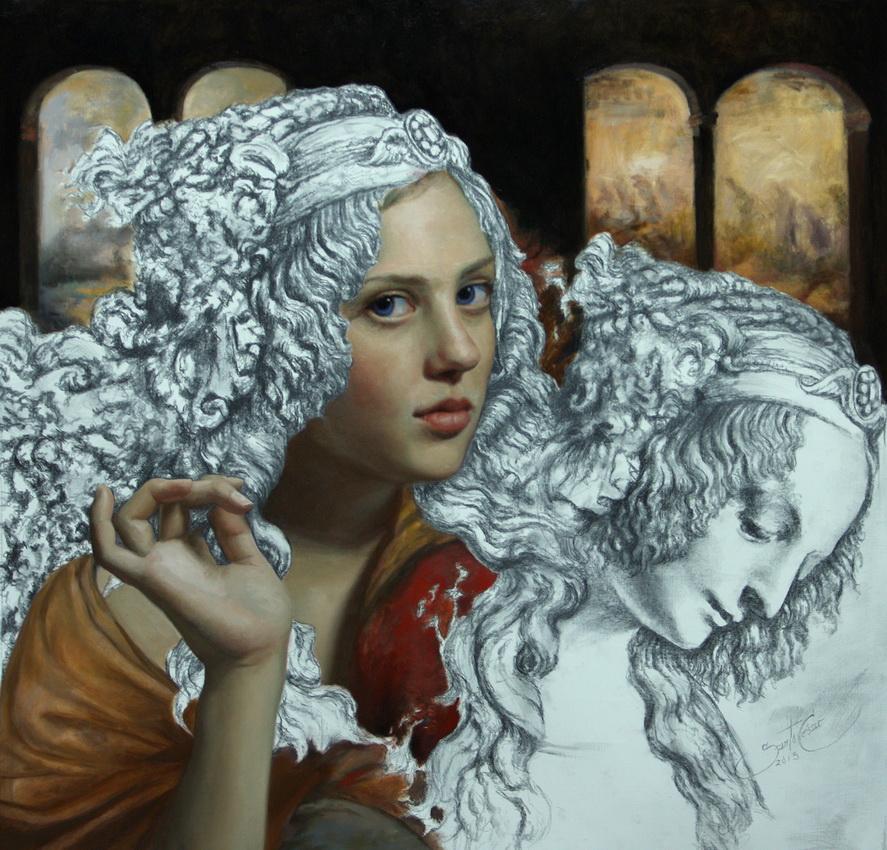
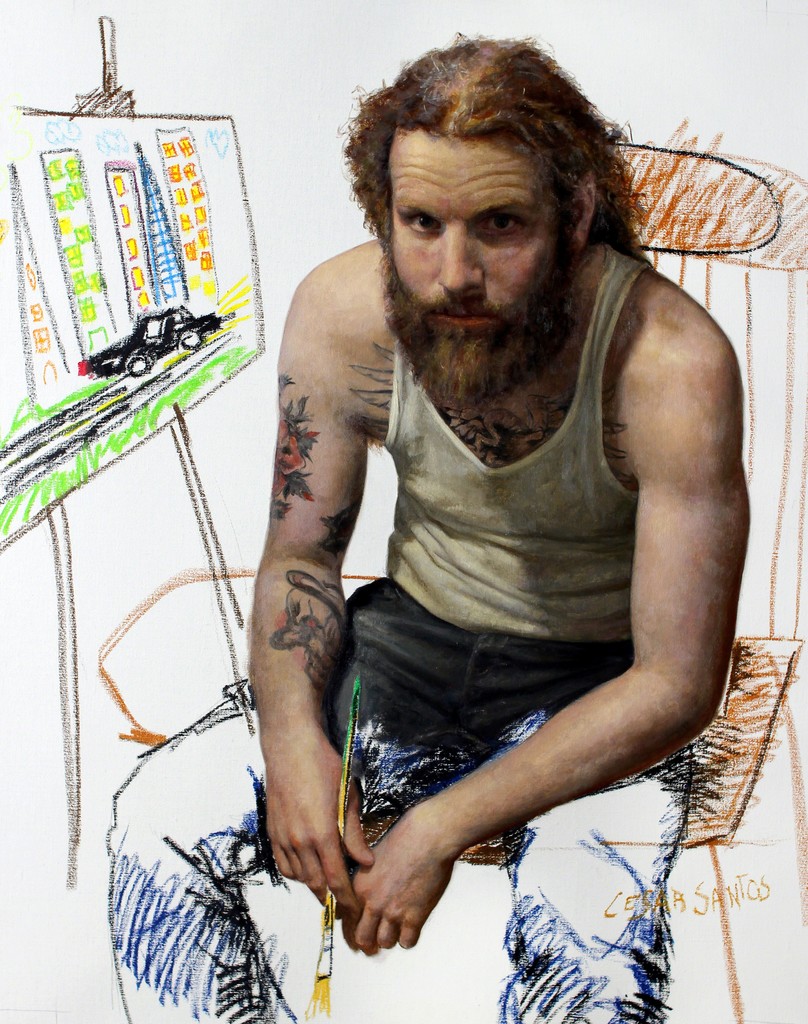
Ali Cavanaugh | www.alicavanaugh.com
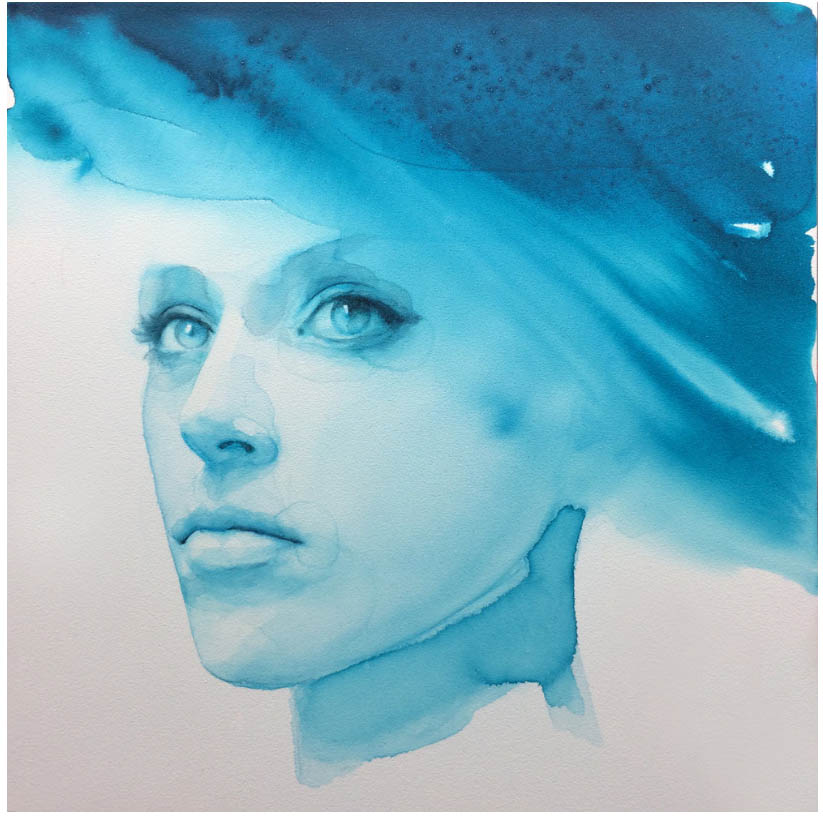
Ali Cavanaugh paints her four children as watercolor portrait abstractions. Her original watercolor paintings have the feeling of spontaneity and freedom, yet the faces remain anatomically correct and alive. The artist paints on kaolin clay boards look like frescoes displayed without glass.
#1 Story & Emotion
Art is not created in vacuum. Artists absorb, filter through and reflect on personal experiences. They challenge our views, question values and bring beauty and emotional peace into our world. Story and feelings in the painting define the artist’s voice or style.
Sean Mahan | seanmahanart.com
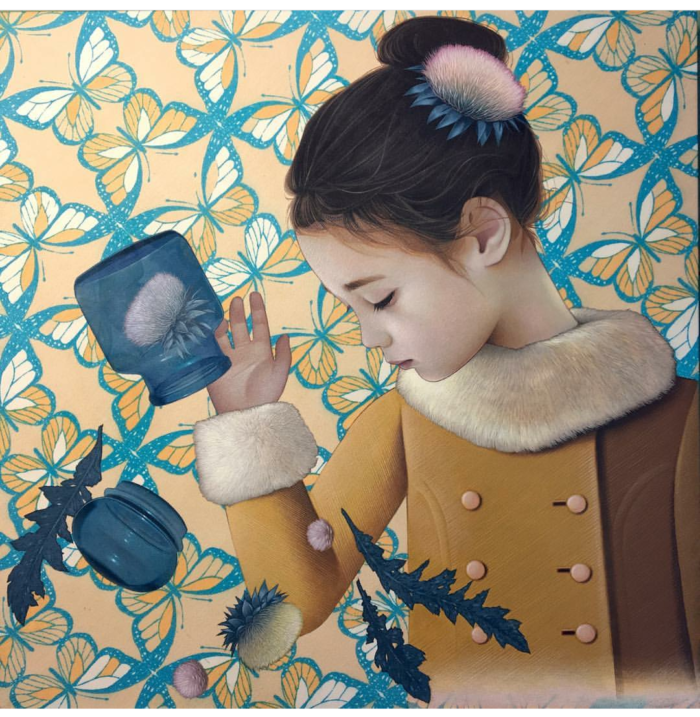
Sean Mahan is a figurative artist who paints a “sense of wonder about innate human sweetness.” The artist creates images of girls and boys busy with mundane tasks yet removed-from-this-world-expressions that produce a feeling of contradiction. Mahan paints in acrylic and graphite on wood to produce his contemporary art paintings.
Art as personal expression
We can look at art as personal expression. A lot of artists can’t articulate verbally why they paint because it comes from within and shows what we experience inside us. We paint emotions in visual symbols. If we are bitter, art shows that. If we are loving, art expresses it. A vast majority of art is created as means of personal expression today unlike the classical art.
Artist’s aesthetic plays a big part in a painting style. For classical artists beauty is the highest aim in any subject we paint idealizing the figure, which is the opposite to aesthetic of so many modern and contemporary artists. Ugliness finds its home in art just as beauty once did. (Look at Willem de Kooning’s paintings of women vs. William-Adolphe Bouguereau’ art).
This is one of the first artists I’ve discovered almost two decades ago. His unique artistic voice has captivated me ever since. The Canadian artist, Rob created amazing colored pencil drawings of illusion and magic realism art. I’m very saddened to write that Rob committed a suicide in late 2017.
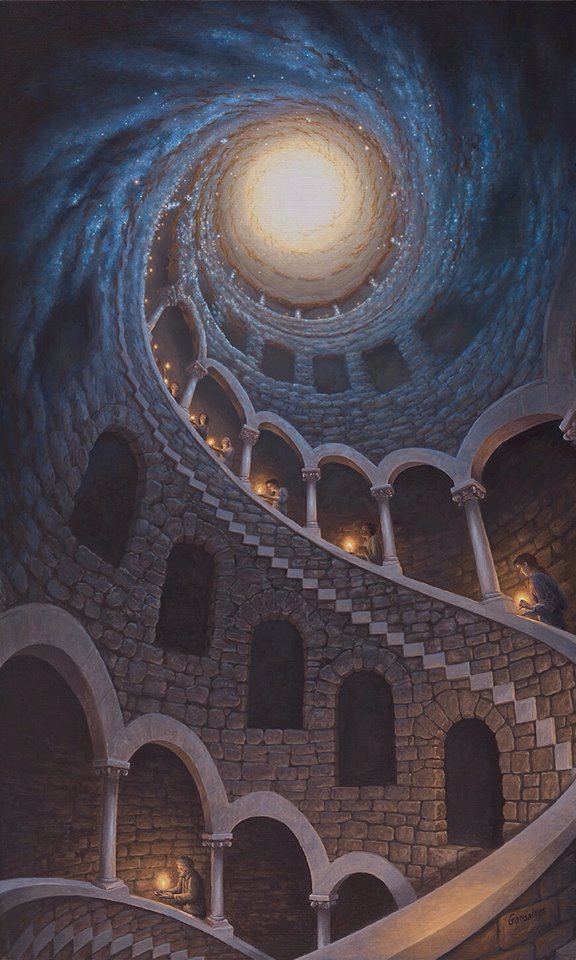
Rob Gonsalves | www.facebook.com/RobGonsalves.Official
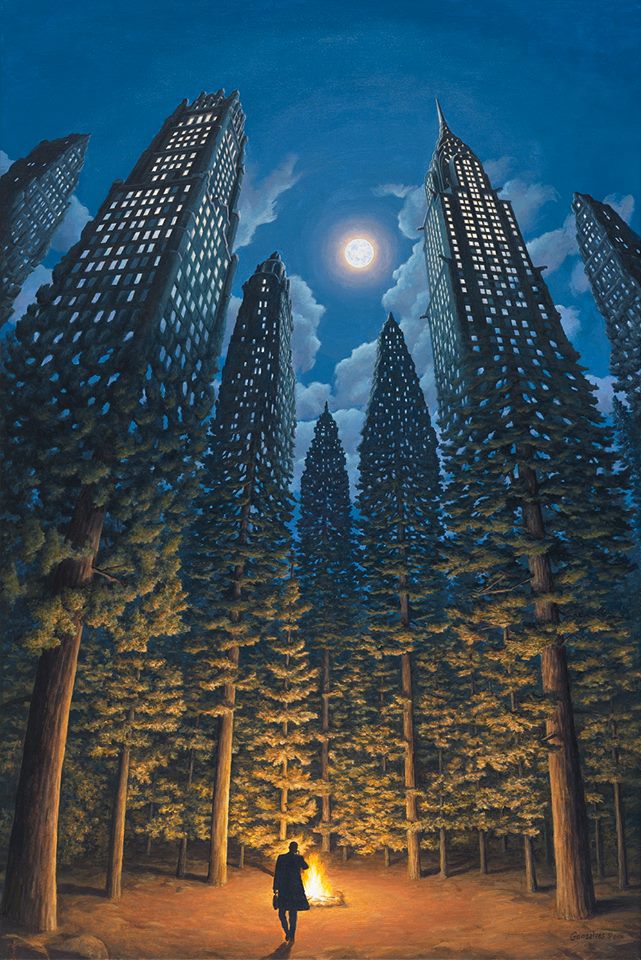
Christian Schloe | www.facebook.com/ChristianSchloeDigitalArt
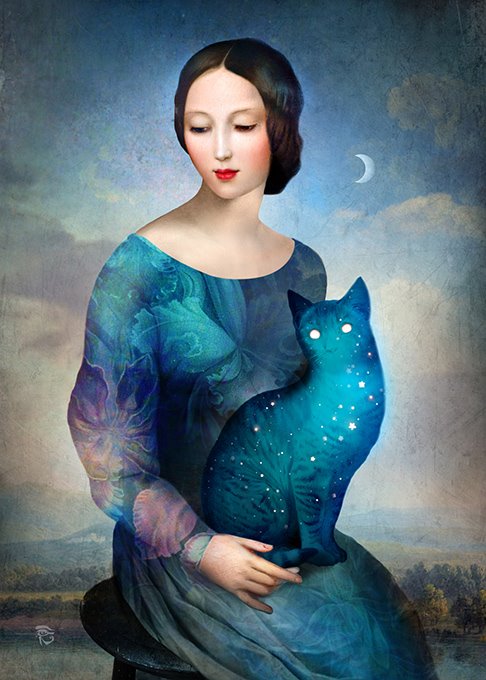
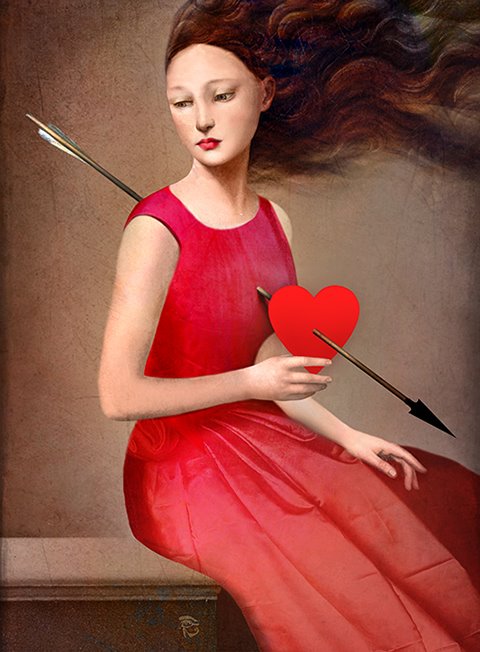
This artist creates soulful digital artwork so sincere that it feels just as powerful as a real painting. His sense of color and design helps articulate powerful emotions of love, contemplation, curiosity and melancholy.
Art as ideology
A lot of art has been created to celebrate the country’s ideology and order. For instance, the Soviet Union art of the 50-s can be easily called propaganda art, but it also served a higher purpose lifting people’s morale to work for better good. The country took great care of its artists by giving them free studios, organized big exhibitions, commissioning and paying for work. The downside was the limitation on the subject of painting.
The Soviet art
I took these pictures back in 2015 during a large-scale exhibition happening near the Kremlin. An extensive review of the Soviet art created in the 50s-70s shows people at work building a new era of prosperity for the people.
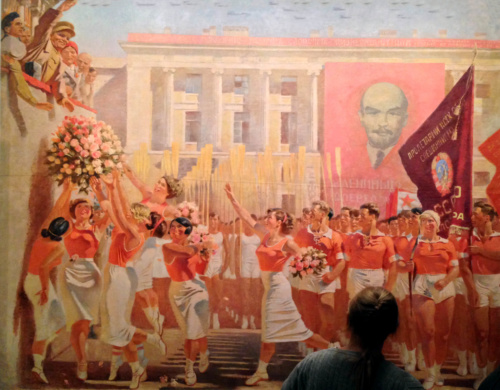
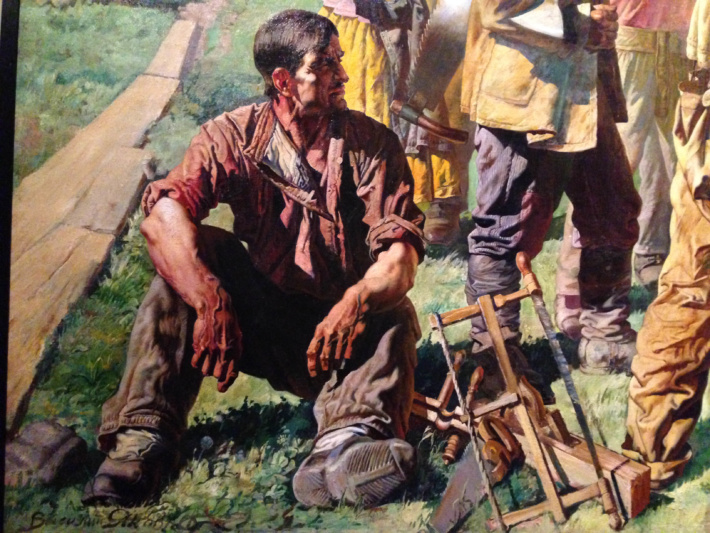
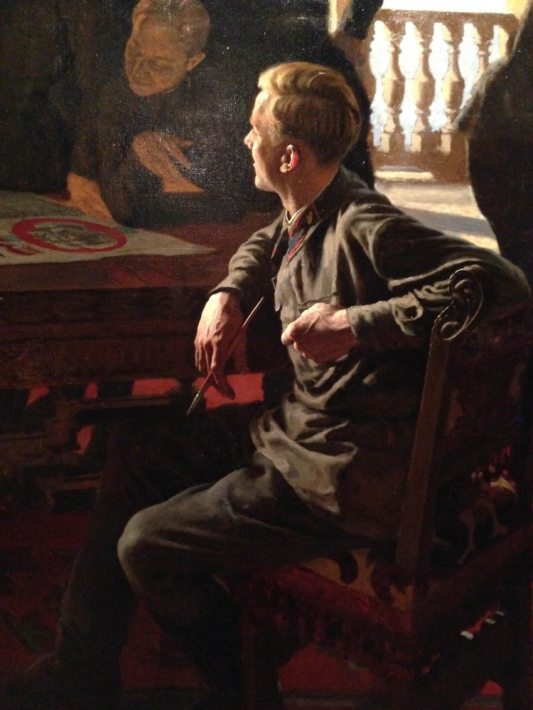
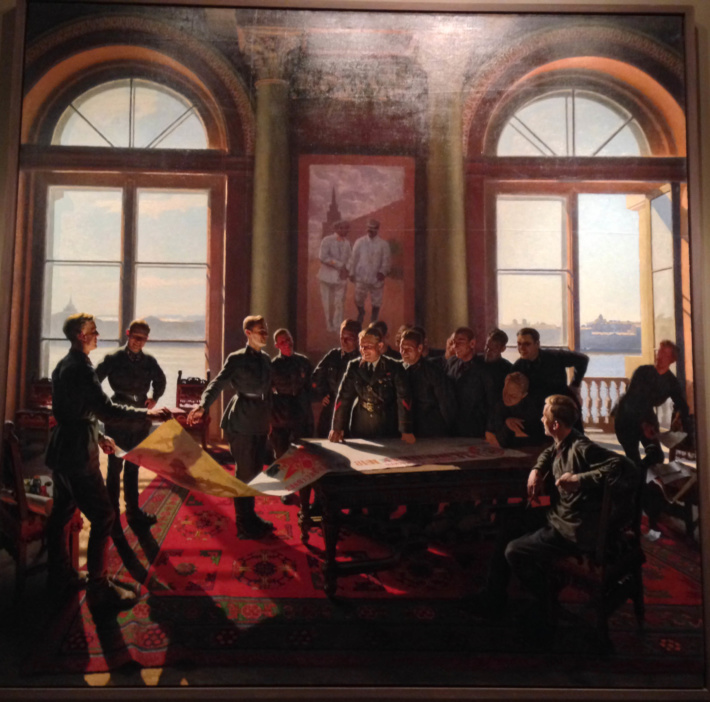
We can also look at art that’s created as a rebellion against its government and social order. Chinese contemporary artist Ai Weiwei often criticizes his government. The U.S. is also so divided politically that these feelings of division branch out to art. We can find paintings of both Hillary and Trump at art fairs, galleries and exhibitions.
Art can also become more sarcastic as we see in this painting of Trump and Putin by Tony Pro https://www.tonypro-fineart.com/dataviewer.asp
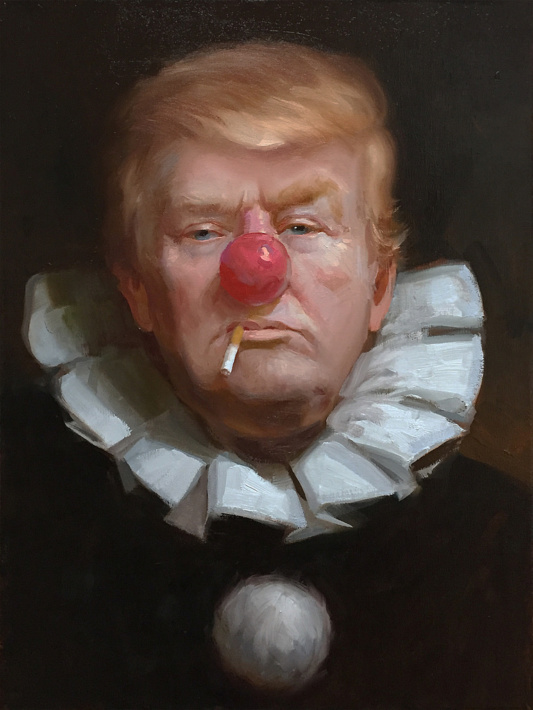
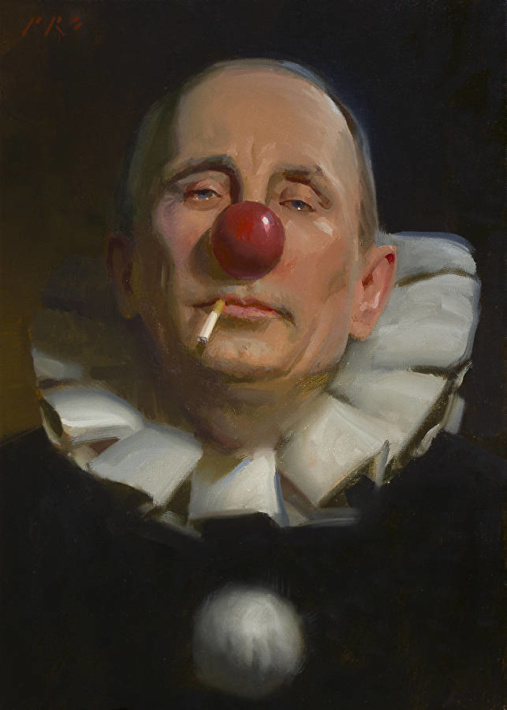
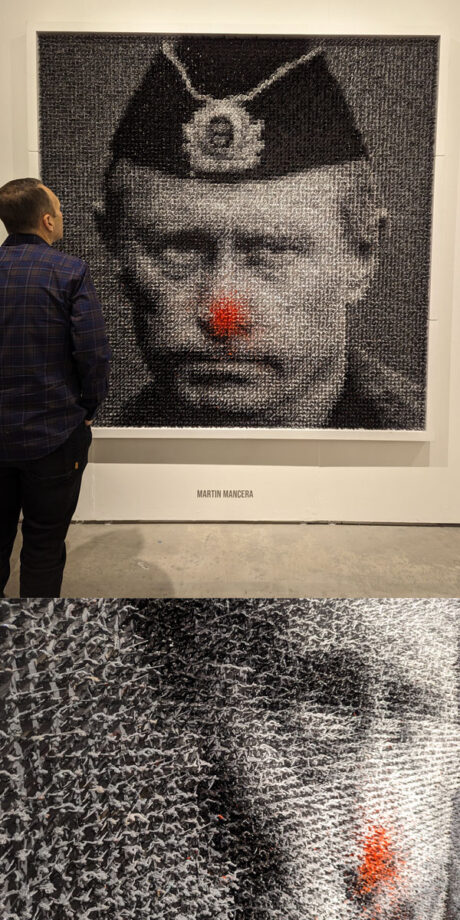
Art as social commentary
Some artists like to leave social commentary and to reflect our culture back at us. Famous modern art artist Andy Warhol commemorated consumption in his famous paintings. Contemporary artist Alex Gross paints images of people with the message of antisocial networking, media control and online self-absorption. He often incorporates worldwide brands, pop culture and cliché symbols into his paintings. www.alexgross.com
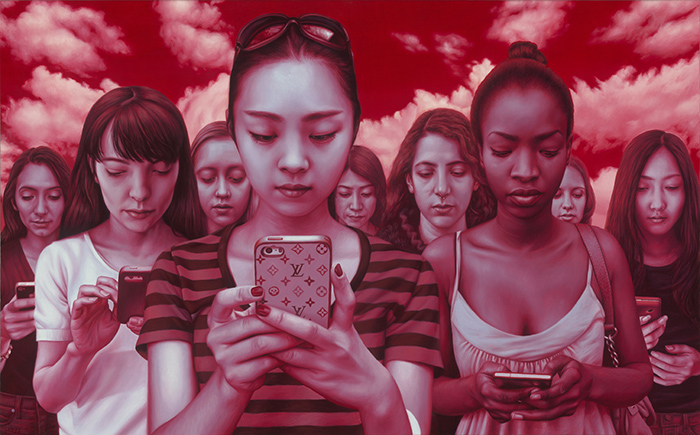
#2 Artistic vision and Technical Innovation
Artistic vision is the most important element in contemporary art and is the hardest to develop, producing consistent paintings and 3-D art.
The innovation takes different forms:
- Unique vision often leads to innovation in the depiction of a form.
- Unique vision pushes artists to explore the surfaces and materials to create contemporary art.
- Unique approach is present in the narrative figurative painting.
- Unique vision channels the artist in art installations designed to create personal experiences. Check out the infinity rooms by Japanese artist Kusama, feminist art by Judy Chicago, and numerous video installations or immersive experiences like by Studio Drift.
Kehinde Wiley | www.kehindewiley.com
Exploring contemporary painting we must notice figurative paintings of African-American artist Kehinde Wiley. His paintings are steeped in European art history and portraiture. They also reveal his sense of color and design. The artist often presents ordinary-dressed African-American men and women as aristocracy in his vibrant oil paintings, removing the figures from expected environment of the streets and placing them into a culture of high art. His most recent project is the unveiled official portrait of Mr. Obama for the Smithsonian.
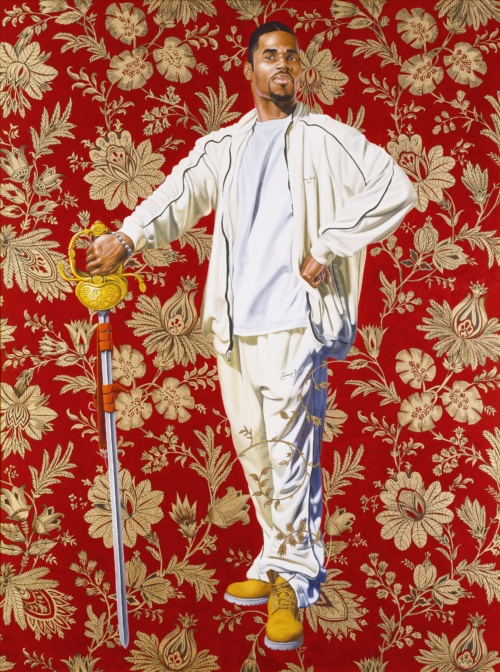
Obj. No. 2006.14 Photo No. s55076.CT.1
Kehinde Wiley (American, b. 1977), Willem van Heythuysen, 2006, Oil and enamel on canvas, 96”H x 72”W Virginia Museum of Fine Arts, Richmond. Arthur and Margaret Glasgow Fund. Photo: Katherine Wetzel © Virginia Museum of Fine Arts
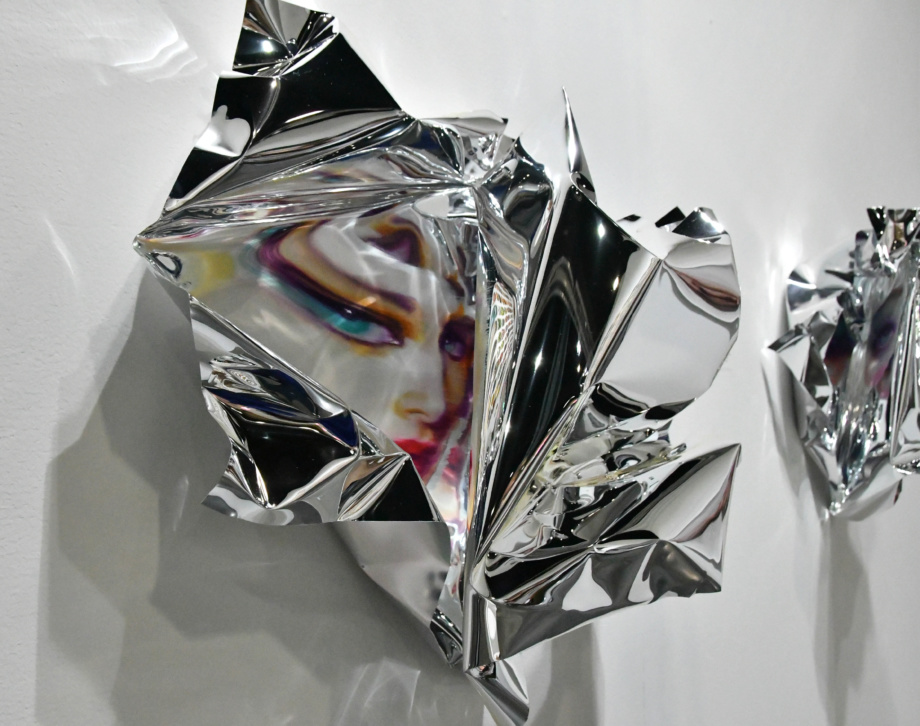
Carole Feuerman

Carole Feuerman is a contemporary hyperrealist sculptor who creates indoor and outdoor sculptures that symbolize strength and balance. In her studio in New York, she makes casts from real people, then paints over them and adds Swarowski crystal beads, hair and eyelashes.
Another contemporary artist who creates 3-D art is Rogan Brown. His wall art pieces present us with intricate designs and delicate paper cuts reminiscent of natural organic growth we could observe under a microscope. There is a great sense of poetry in his paper sculptures that evoke feelings of death and rebirth. We want to get lost in these dreamlike multilayered forms.
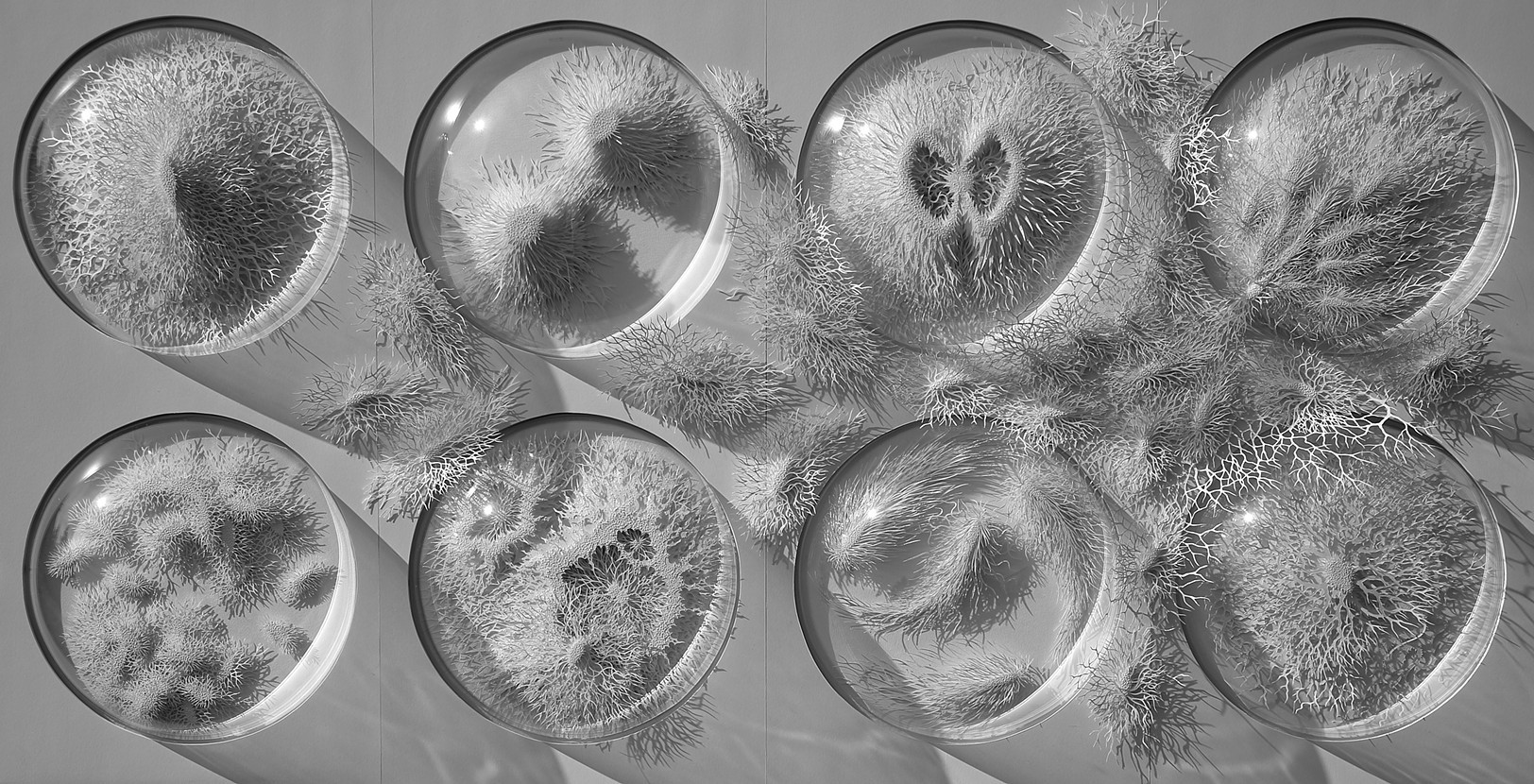
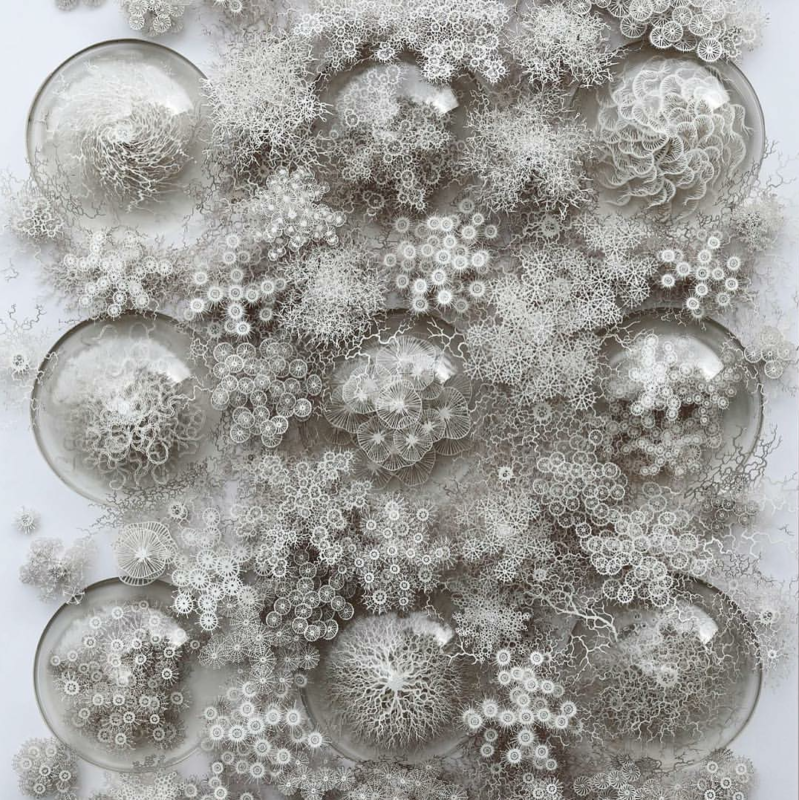
# 3 Composition & movement
Strong contemporary art features great abstract design captured in shapes, colors, and diagonals, which create visual movement on canvas. As viewers we often don’t pay attention to painting’s design, captivated by other elements like details, color or facial expression, but the creative composition is a cornerstone to all great art. Movement lets us travel across canvas and leads us to the center of interest in contemporary art. Movement can be achieved in many ways that include placing often repetitive elements that create rhythm (Magritte, van Gogh) or atmospheric effects (Turner).
Contemporary Russian artist Serge Marshennikov is one of the best figurative artists working today. His sense of movement, color, and anatomic accuracy shines in paintings of semi-nude women. The models are intentionally placed at diagonals, letting viewers travel across the form to never leave the canvas. The artist’s understanding of color harmonies and color temperature in skin tones and the surroundings is truly amazing. While Serge lives and works in St.Petersburg, he is represented by several art galleries in the U.S.
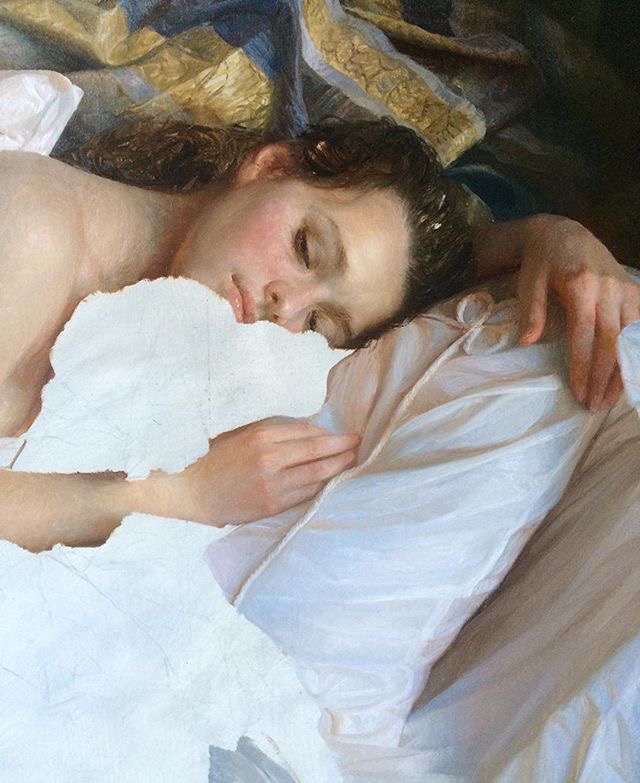
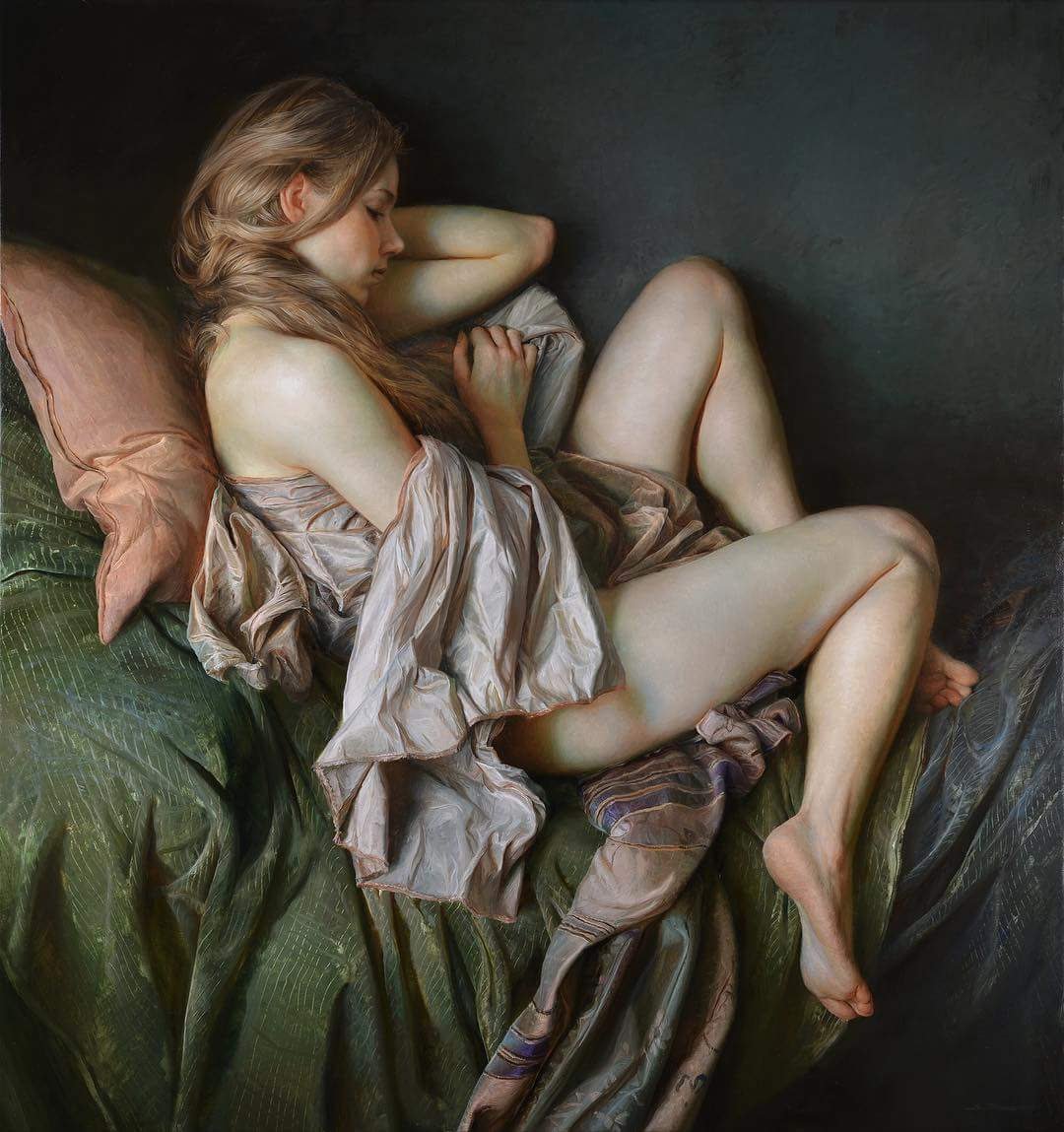
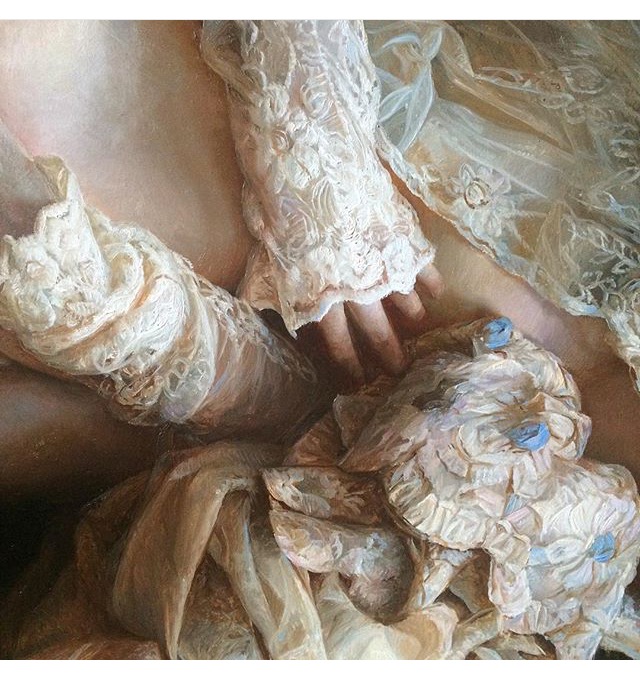
#4 Color
Sophisticated color mixing may be hard to understand for a beginner in art. Here I’d like to explain the difference between professional painting and not so much so.
Color harmony plays enormous visual significance in contemporary art just like it did in the masterworks. Representational artists spend years to learn how to mix colors and to design their color harmonies. Usually it involves learning how to mix the subdued colors that support the leading hue. A lot of contemporary art paintings have garish hues coming out straight from a tube. They are too bright, flat and unnatural-looking to any serious contemporary artist who paints from nature in realist tradition. The difference between professional artist painter and an amateur one lies in his understanding of paint, edges and light. By carefully controlling these three elements professional artists are able to create beautiful contemporary art.
One of the famous contemporary artists who has mastered the color is Ed Minoff. His seascapes give us a chance to feel the power of nature in beautiful, subtle color harmonies. Such understanding of light and atmosphere comes from numerous studies and direct observation. Painting from life is a must for every aspiring artist who is serious about learning the traditional oil painting techniques. Edward Minoff works and teaches art in New York.
Edward Minoff | www.edwardminoff.com
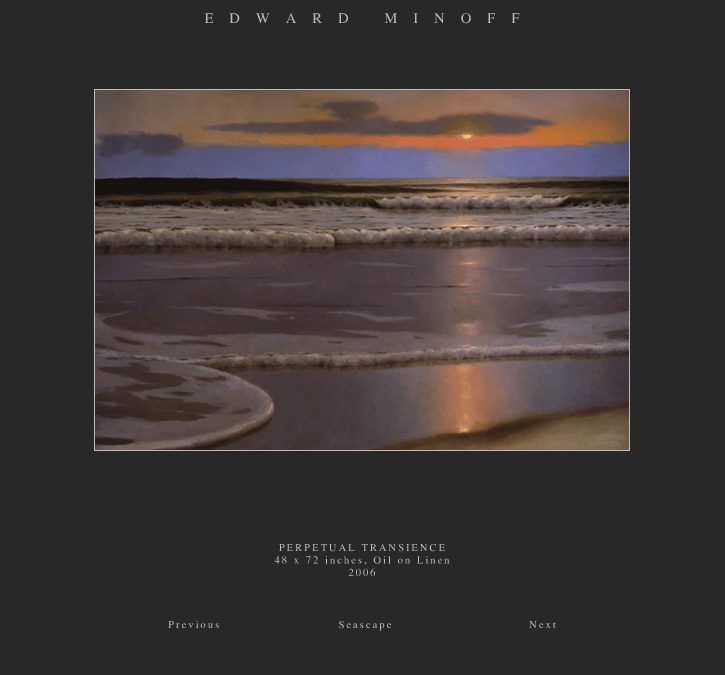
#5 Painting Methods
Painterly strokes vs. Classicism
When we look at oil paintings, some appear hyperrealistic created with very smooth brushstrokes and others look loose with definite brushstrokes. This range of paint handling depends on artist’s personality and training. Both painterly and classical contemporary art can be equally good, if it’s painted with professionalism and from the heart. A lot of people don’t like the unblended brushstrokes, especially beginner painters, but this very type of painting is hard to achieve. Such loose brushstrokes look effortless to us, but this manner of painting actually carries years of experience learning to apply paint freely in just the right color and tone. Looking back at the art history Sargent and Zorn come to mind, employing loose, masterful brushstrokes to achieve freshness and realism in their paintings.
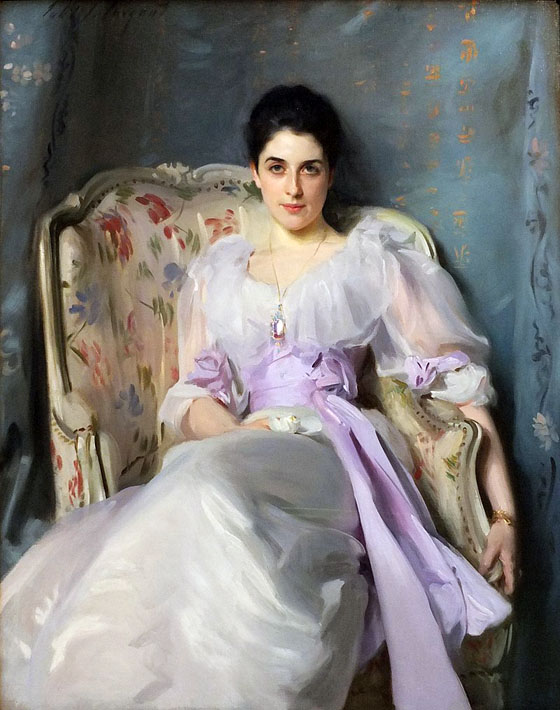
Classical painting technique shows no visible strokes. Van Eyck and David are great examples in art history. A complete blending of strokes comes with deliberate application of paint and brushing over it with a soft, clean brush after that. Also, painting with smooth brushstrokes often involves the glazing technique. These are multiple layers of paint applied very thinly to create an effect of light and luminosity. This oil painting technique involves lots of planning to foresee the end result painting in glazes (Vermeer, van Eyck).
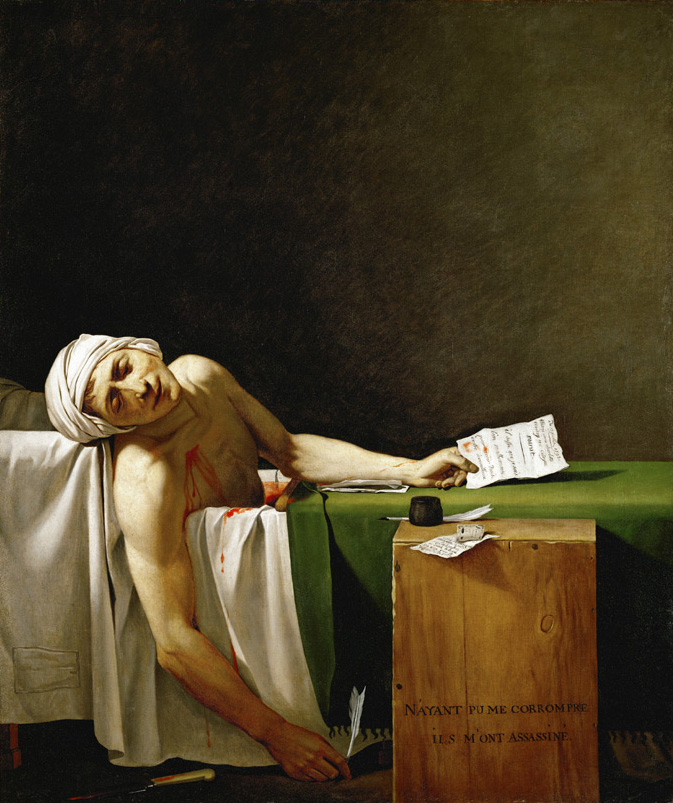
Jane Jones
Contemporary still life painter Jane Jones works in realist tradition, painting flowers in luminous glazes. These flowers glow with light painted on panels. Careful compositions show remarkable mastery in achieving visual balance. The chiaroscuro effect of light and dark captivates the viewer instantly. If you’d like to learn about the artist’s oil painting technique, check out Jane’s art book, DVDs and more!.
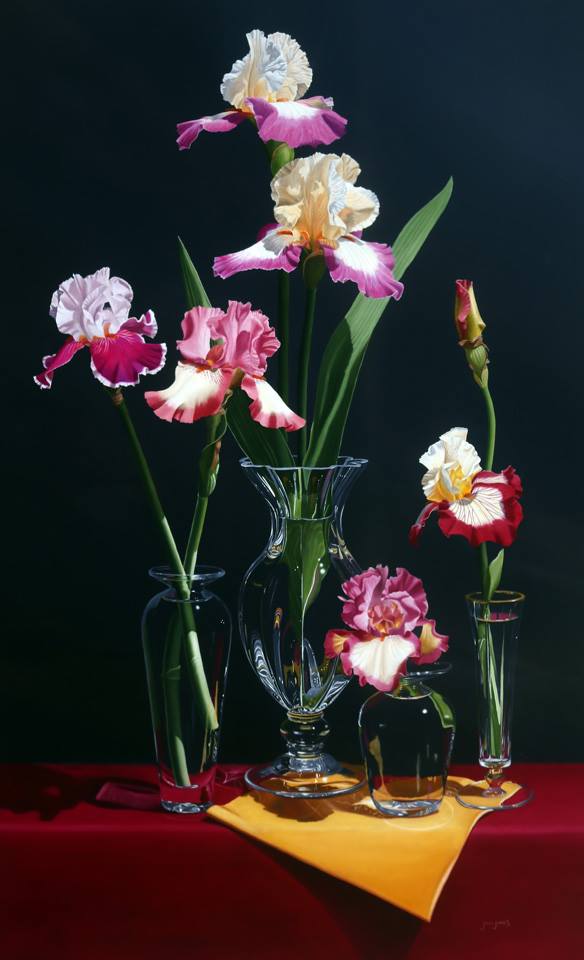
Painterly application of paint is a strong skill that’s often taken for granted. Being able to mix and apply paint in a single correct stroke involves lots of practice. We can explore painterly contemporary figurative art by Jeremy Mann. His personality is channeled through his aggressive and energetic strokes depicting streets and interiors, while the gentle hues in figurative painting capture his softer side. In his art, we can observe a thorough understanding of color impact and how it reverberates across the entire canvas.
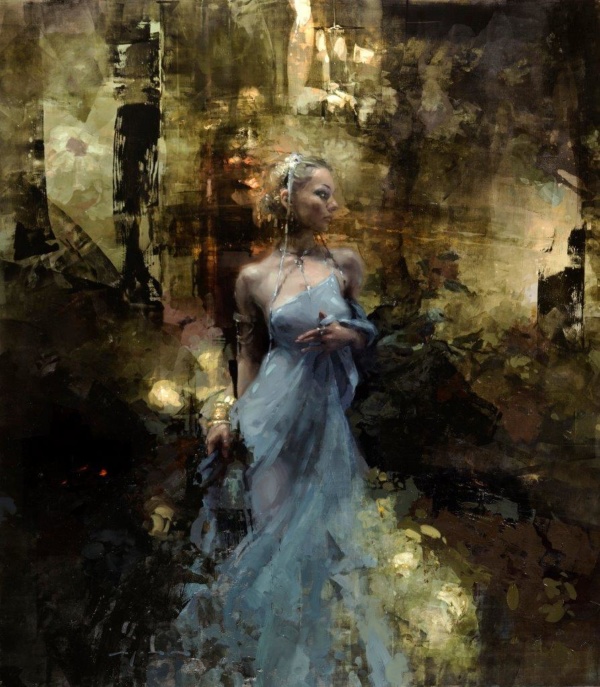
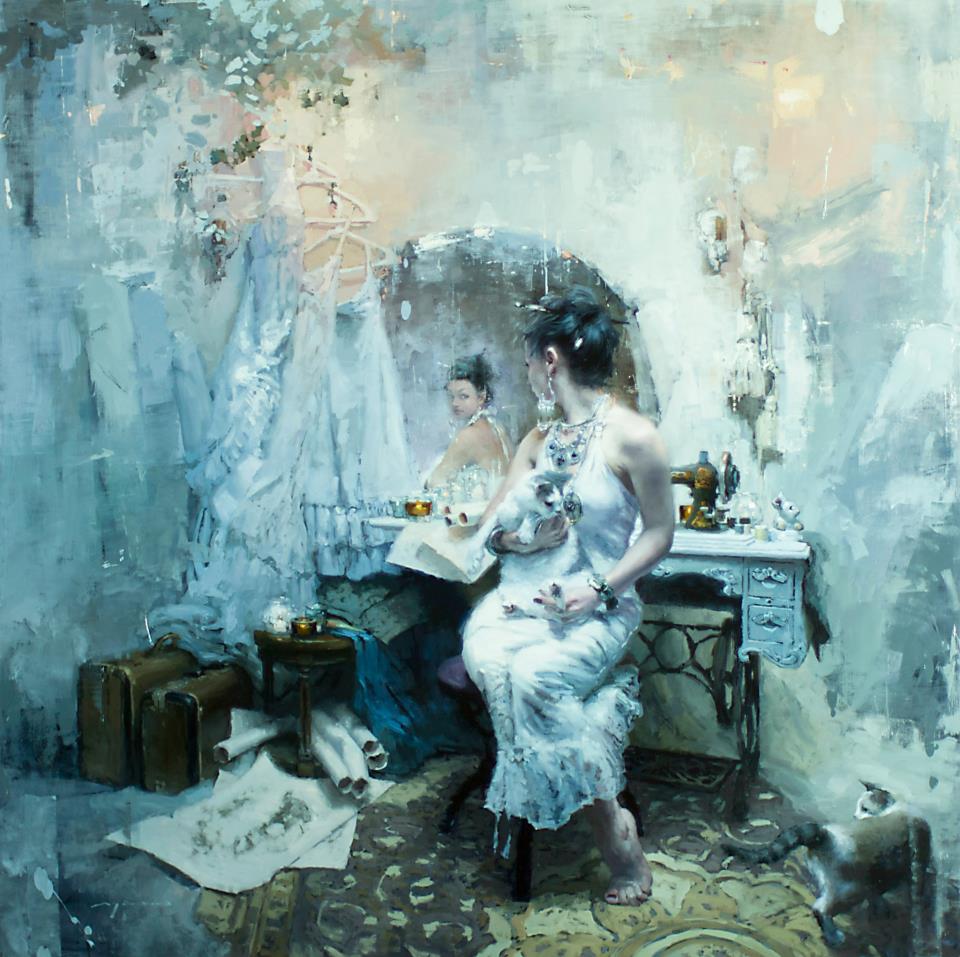
Contemporary painting often involves a mix of painting techniques that we can see in this artwork by Katherine Stone | www.katestoneart.com . Thin glazes create an effect of transparency and depth in the hair and background, while a more painterly strokes make textures in a doll and a girl’s face.
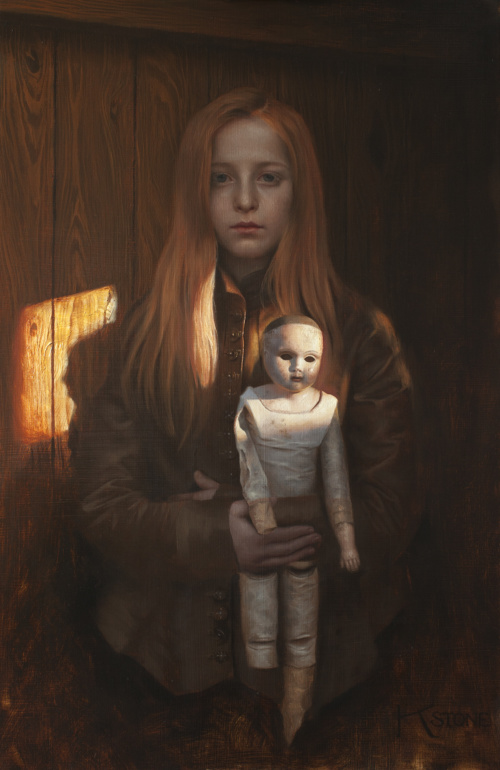
Stylized art
An abbreviation of traditional methods and personal exploration leads to stylized art. When we look back at modern art, Gustav Klimpt and Mucha take prominent place in the world of art history. Their combination of materials is innovative for sure, but more importantly these artists’ work is based on a thorough understanding of human form. Their stylization doesn’t come from limitation (which is so common in contemporary painting), rather from their desire to find a unique voice in art that’s based on solid understanding of anatomy, color and composition. Therefore, their art is simply inspiring.
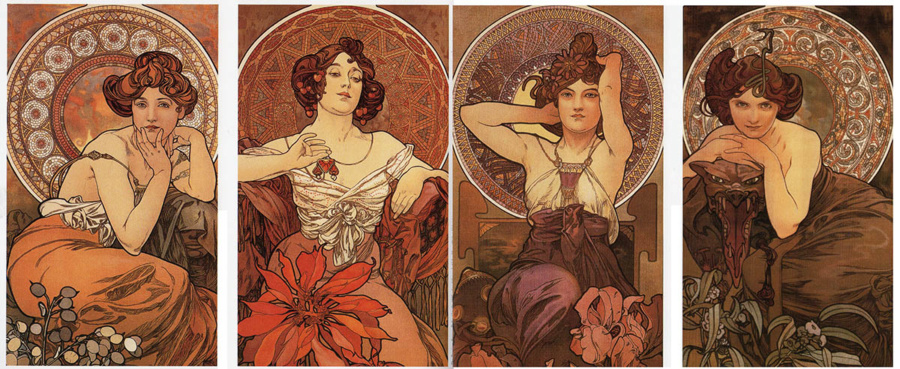
One of the examples in contemporary art painting stylization includes painting by Marco Grassi.
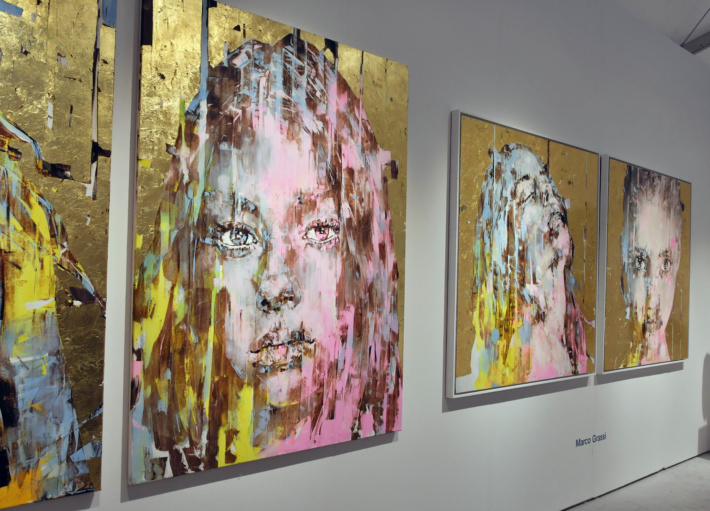
Sarah Joncas | sarahjoncas.ca
A Canadian artist, Sarah Joncas stylizes her figures and patterns to create art in paint. Inspired by animation processes and techniques, her art carries this simplification of shapes, color and tones, supported by exquisitely balanced compositions. Beautiful female figures and portraits are often juxtaposed against city views, nature or flowers to set the mood.
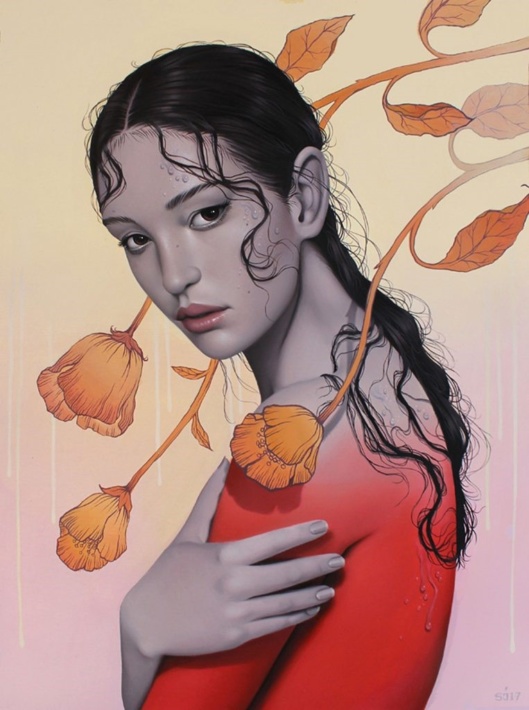
Abstract art vs. Realism
Traditional Realism involves a faithful depiction of light on a form studied from direct observation and Nature. But whenever we step away from it, other art forms take place.
Abstract art is about strong design and color management. We can learn to appreciate contemporary painting by learning to see textures/impasto techniques that create visual movement on canvas. Famous modern abstract artists include Jackson Pollock who pushed the boundaries of concept painting in vigorous strokes and textures. His abstract expressionism art shows understanding of color and design. Splattered paint on large canvases creates rhythm and energy.
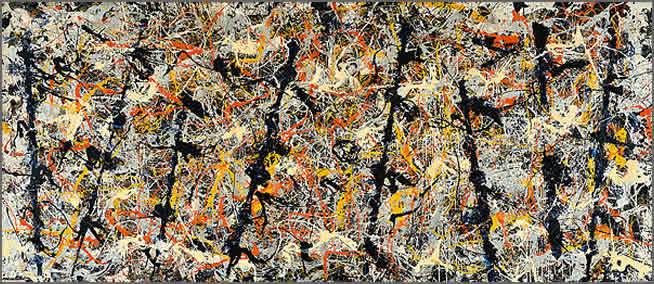
Contemporary abstract painting by Joanne Miller Rafferty is beautiful, mature, and experimental in its nature. Abstract landscapes are spontaneous yet refined juxtapositions of color, gold leaf, and shimmery texture. They are lifescapes with the artist’s distinctive way of observation. Her acrylic paintings are collage pieces that begin at the horizon line and end at the personal experiences of viewers gazing at Joanne’s art. The artist has experimented with the use of leafing, gold leaf, and silver, copper, and variegated varieties. Using a mixture of acrylic color combinations on top of leafing creates new effects that Joanne has discovered in her creative processes. Her painting techniques are included in the Art Lessons book.
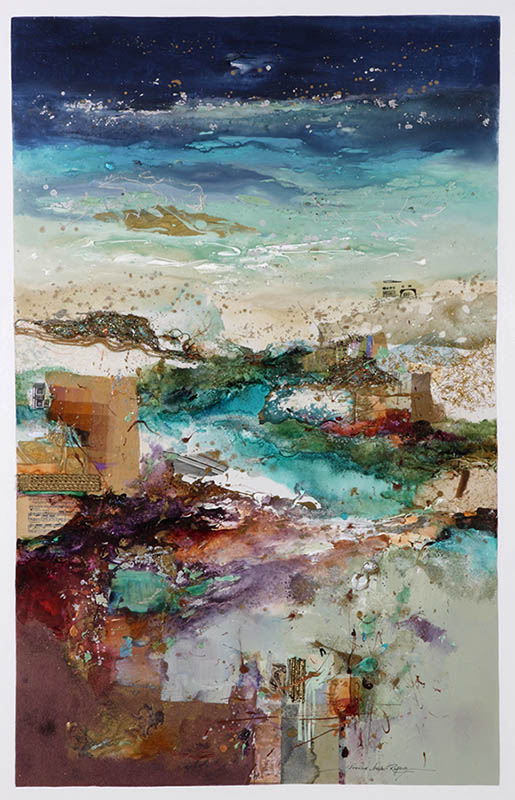
Realism and Hyperrealism
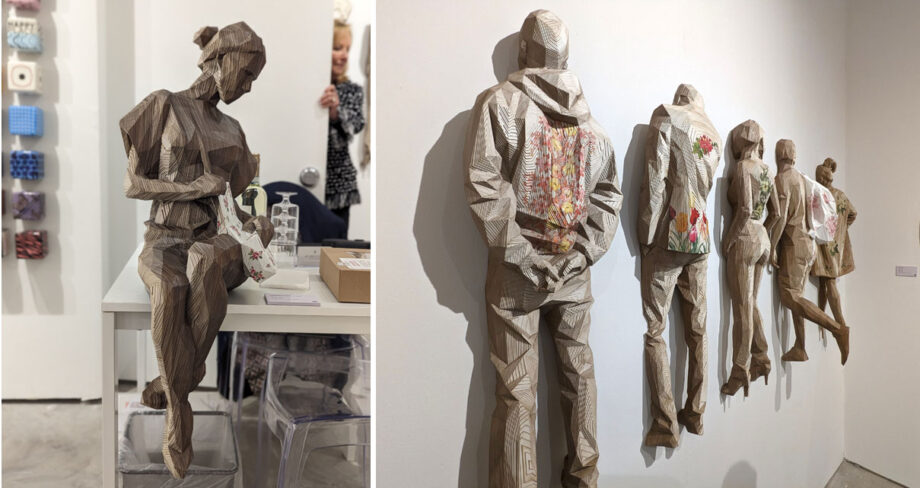
I hope that this roundup of famous contemporary artists and their art gives you some ideas and direction how you can explore and grow your appreciation of contemporary art by paying attention to your emotions, story, composition, color and design in art. Contemporary art serves the humanity as a record of our history. It also creates a lasting memory of feelings and events, and allows us to communicate raw emotion.
Check out visionary art for sale
Great art websites to browse figurative art, sculpture and more:
ARC salon, the Met, National Gallery of Art, the Hermitage. Let me know if you have more resources/websites in mind.
Action step: Next time you look at contemporary art, ask yourself what three unique qualities you see in art. Is it a story, design, color, or simply a strong feeling that moves you? Analyze what draws you in and why.
Complete video series:
Video #1 Part 1 – Learn what makes a painting great
Video #1 Part 2 – Learn what makes a painting great 2: composition, color, emotion
Video #2 Contemporary Art – you’re here!
Video #3 How to take care of your art collection – coming soon!
Video #4 How to frame art
Video # 5 Why you don’t need an interior designer to buy and display art in your home – coming soon!
